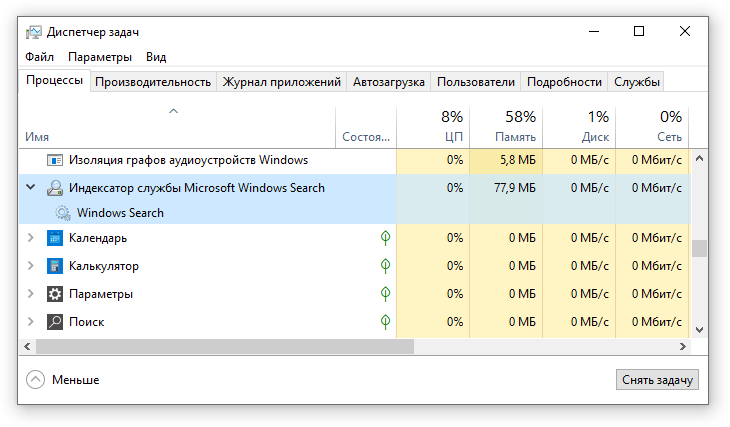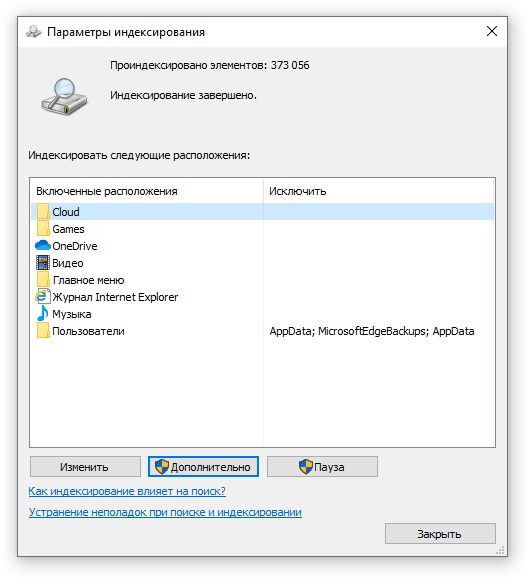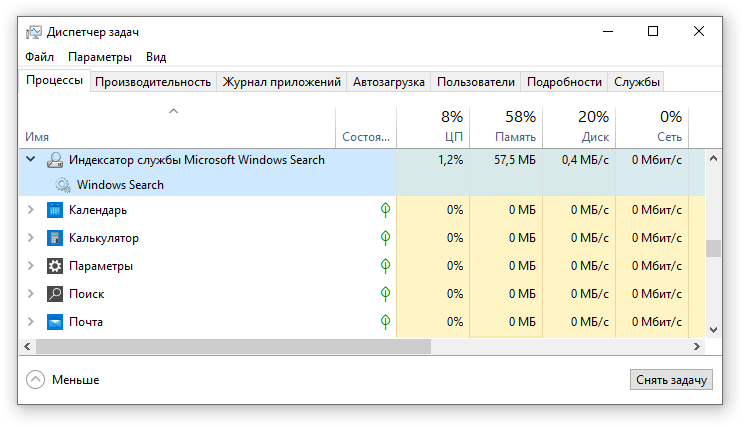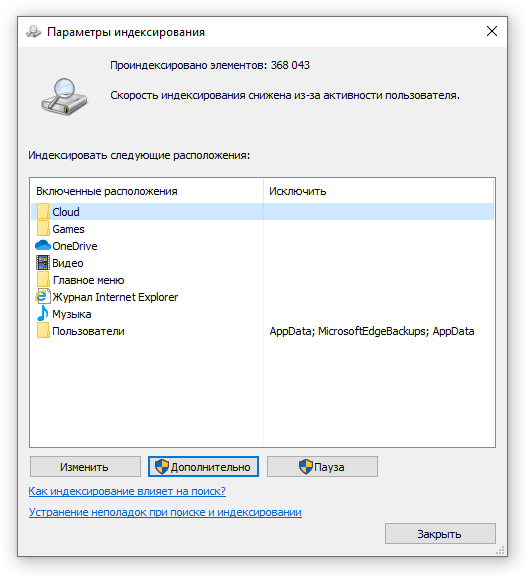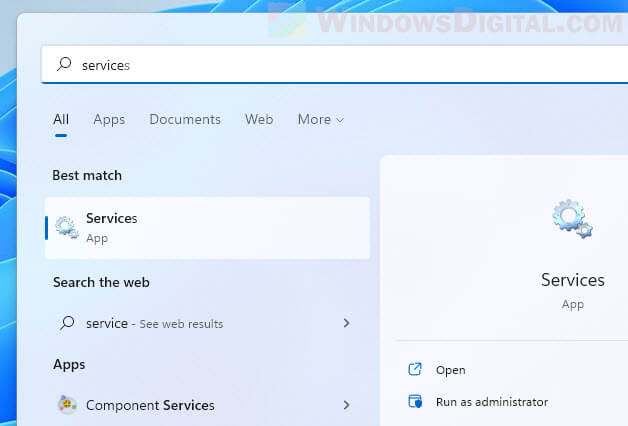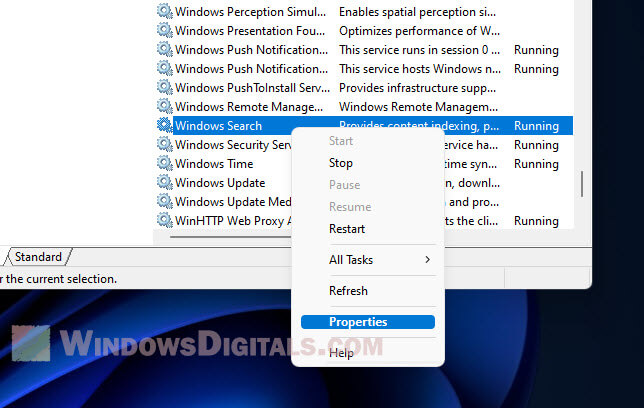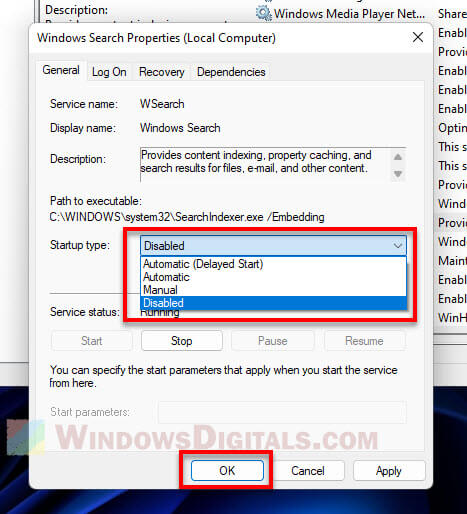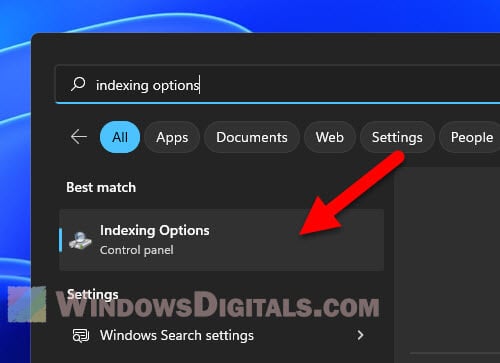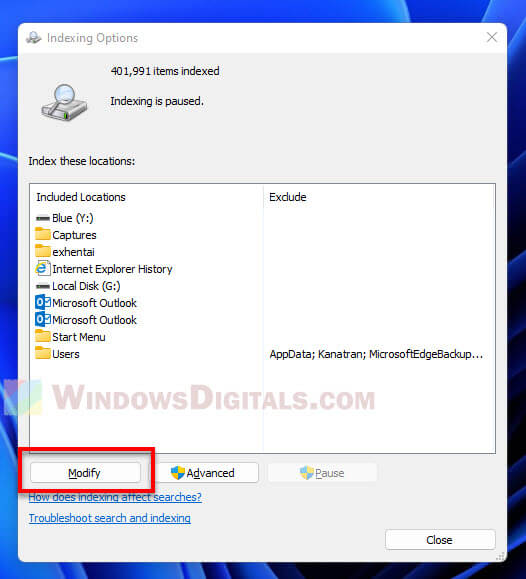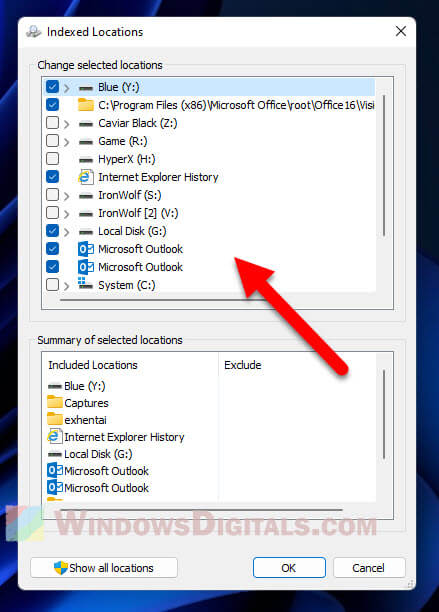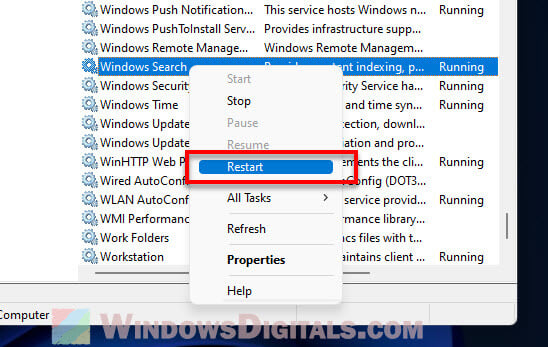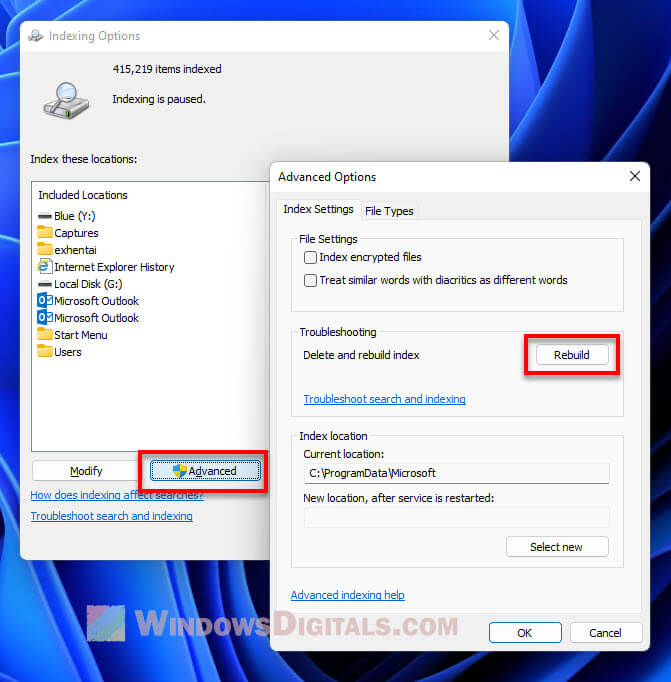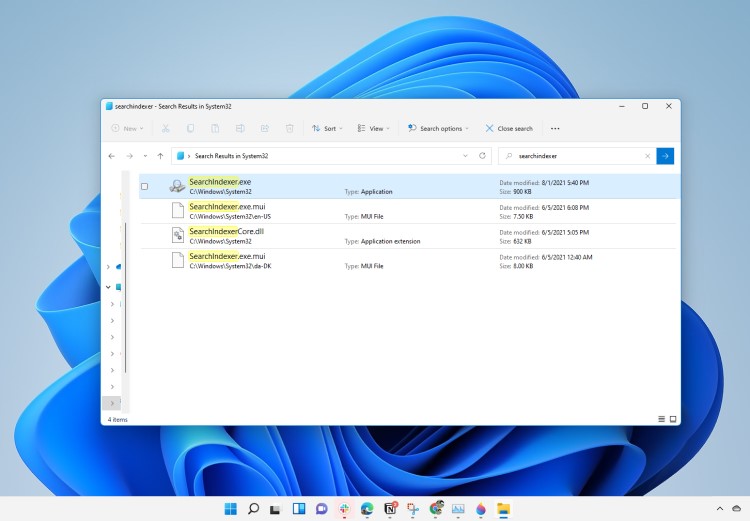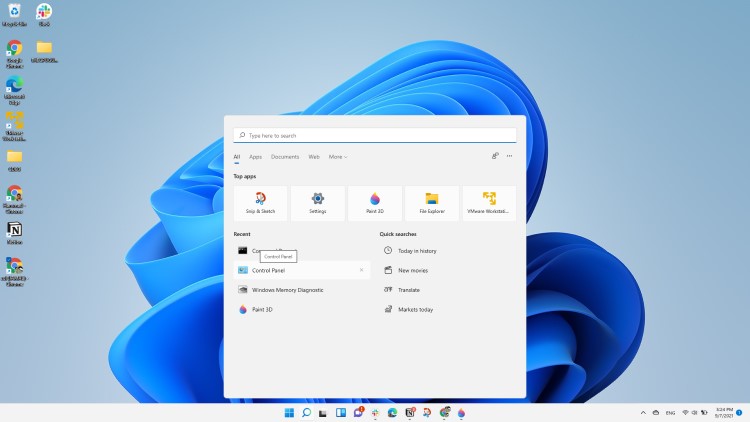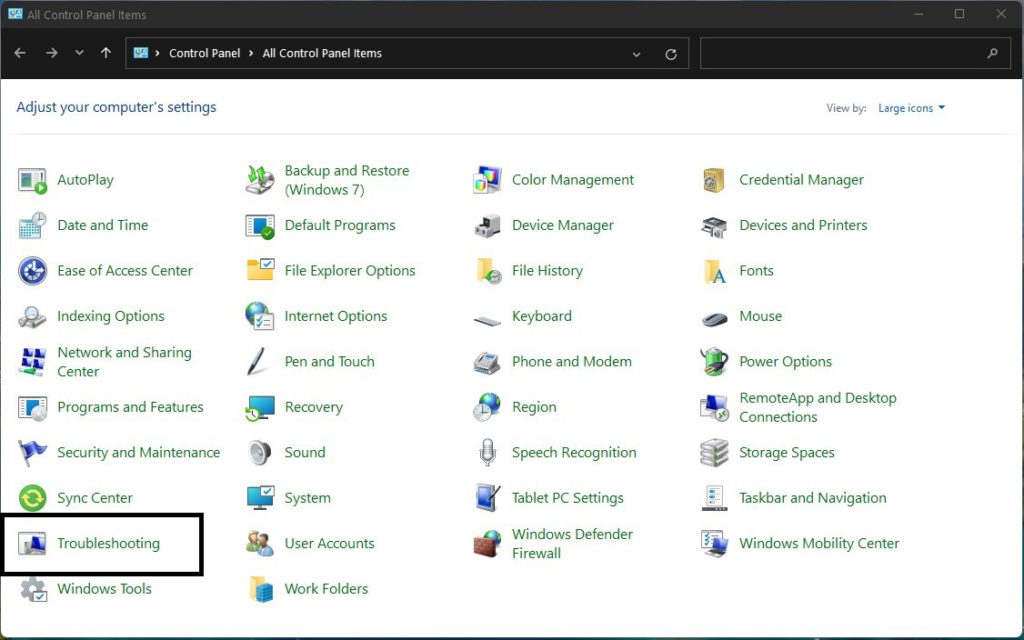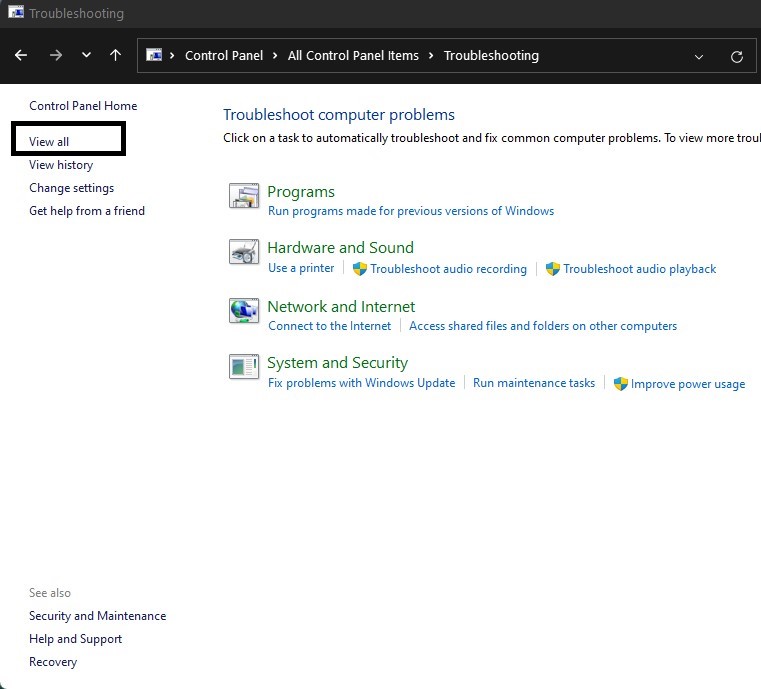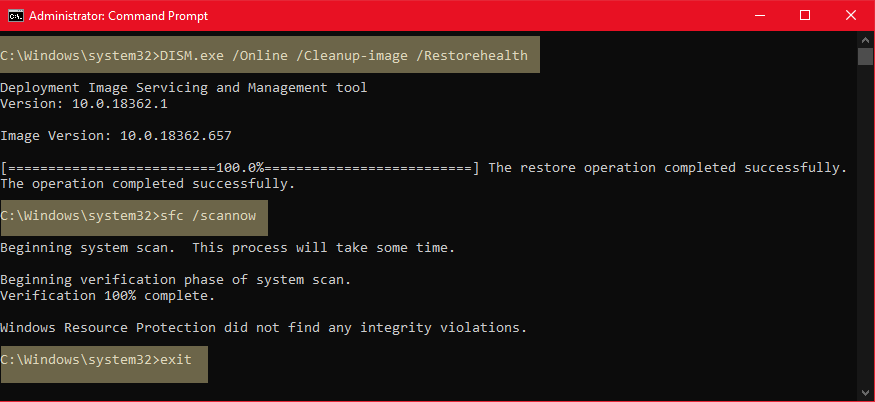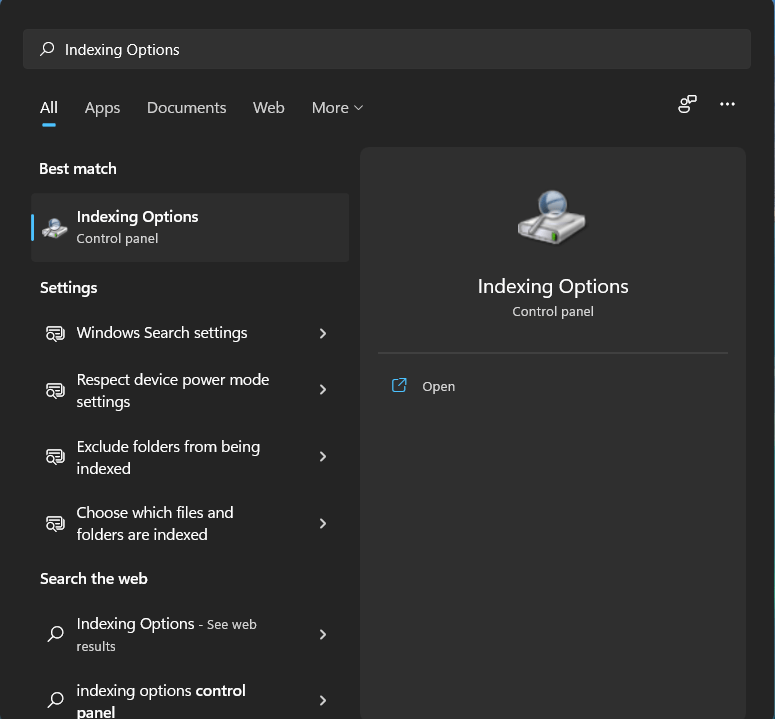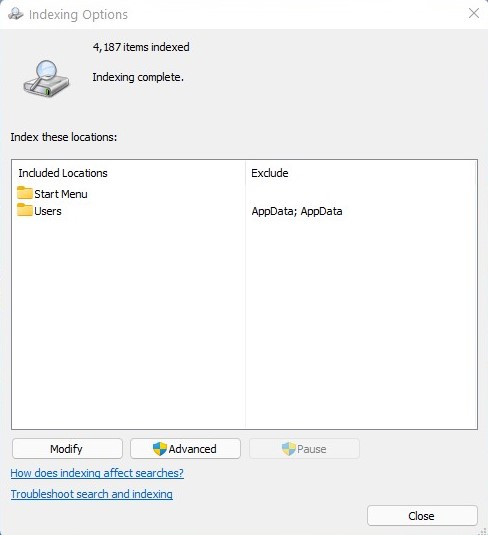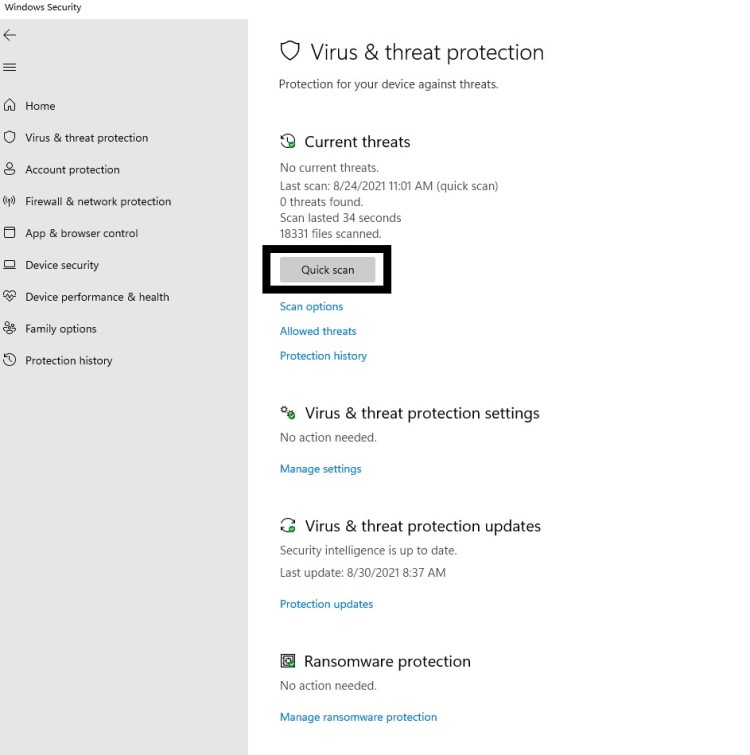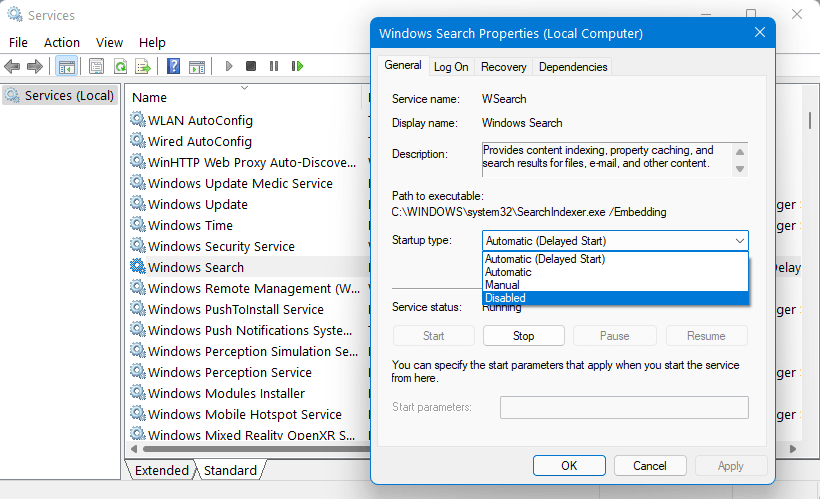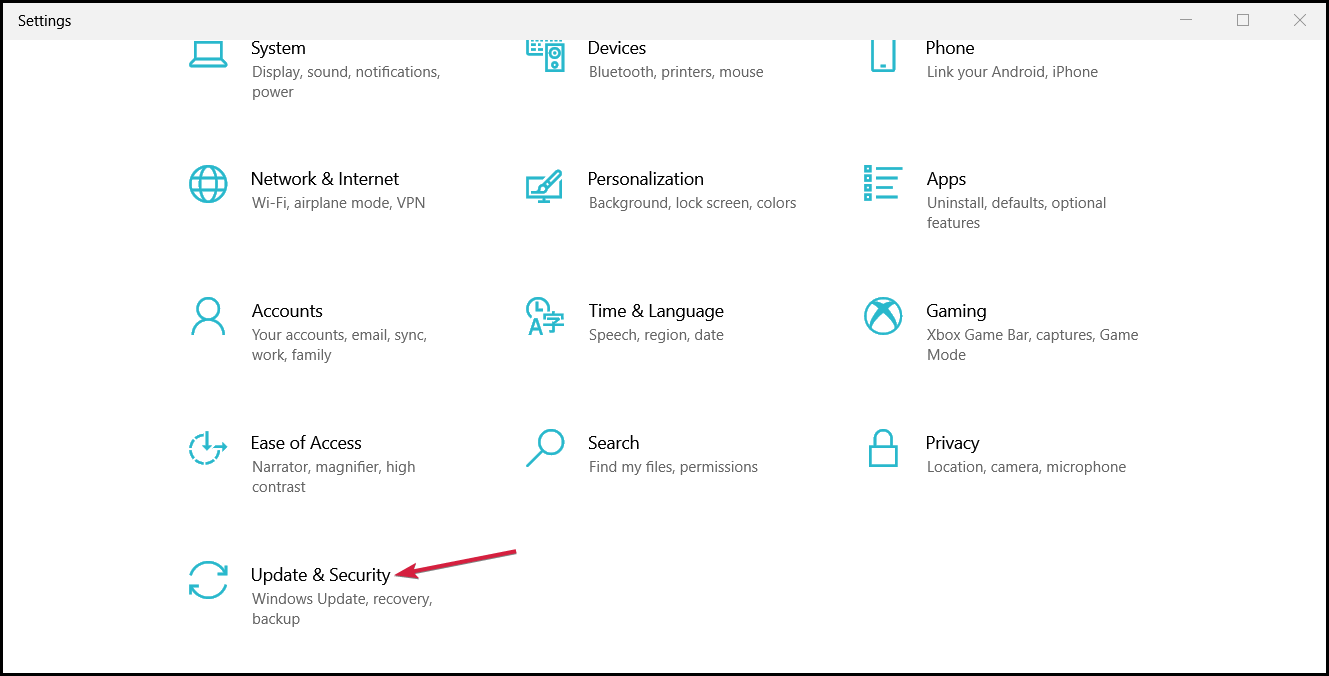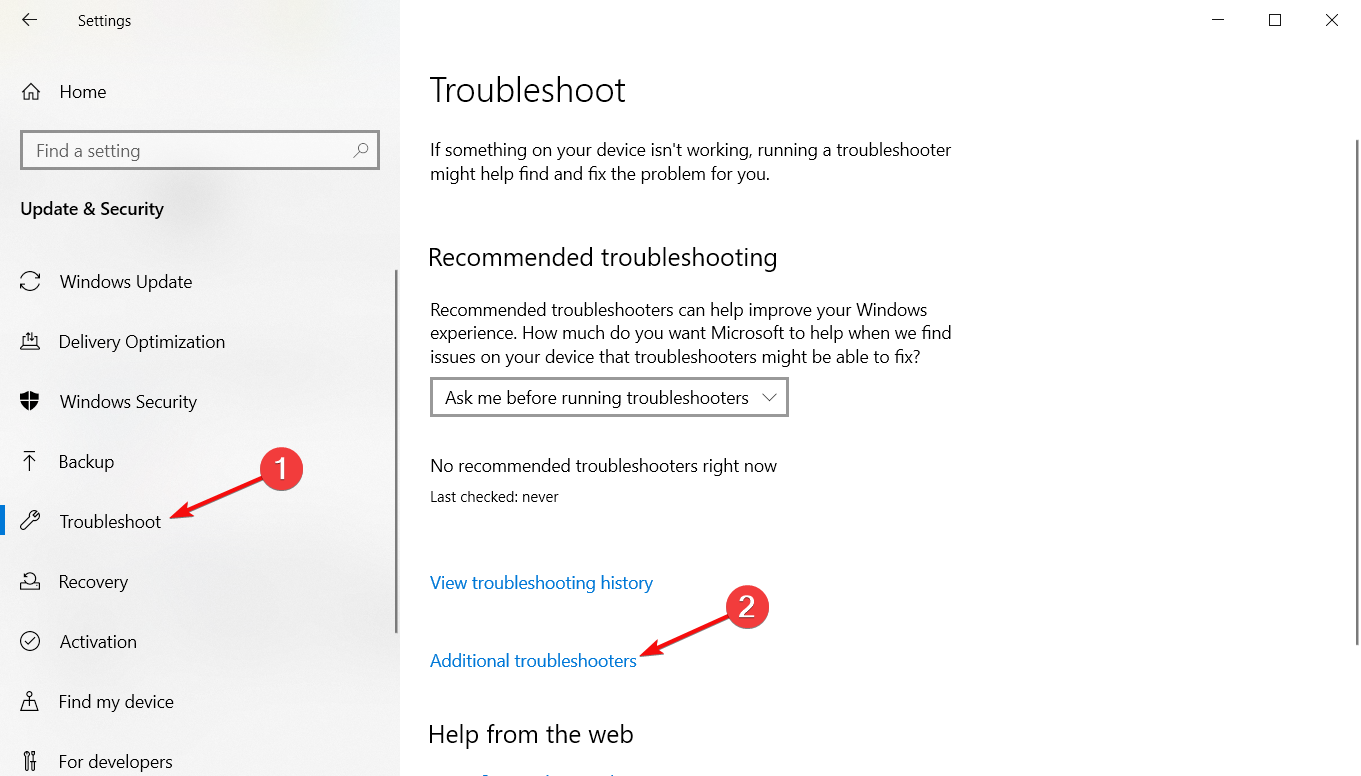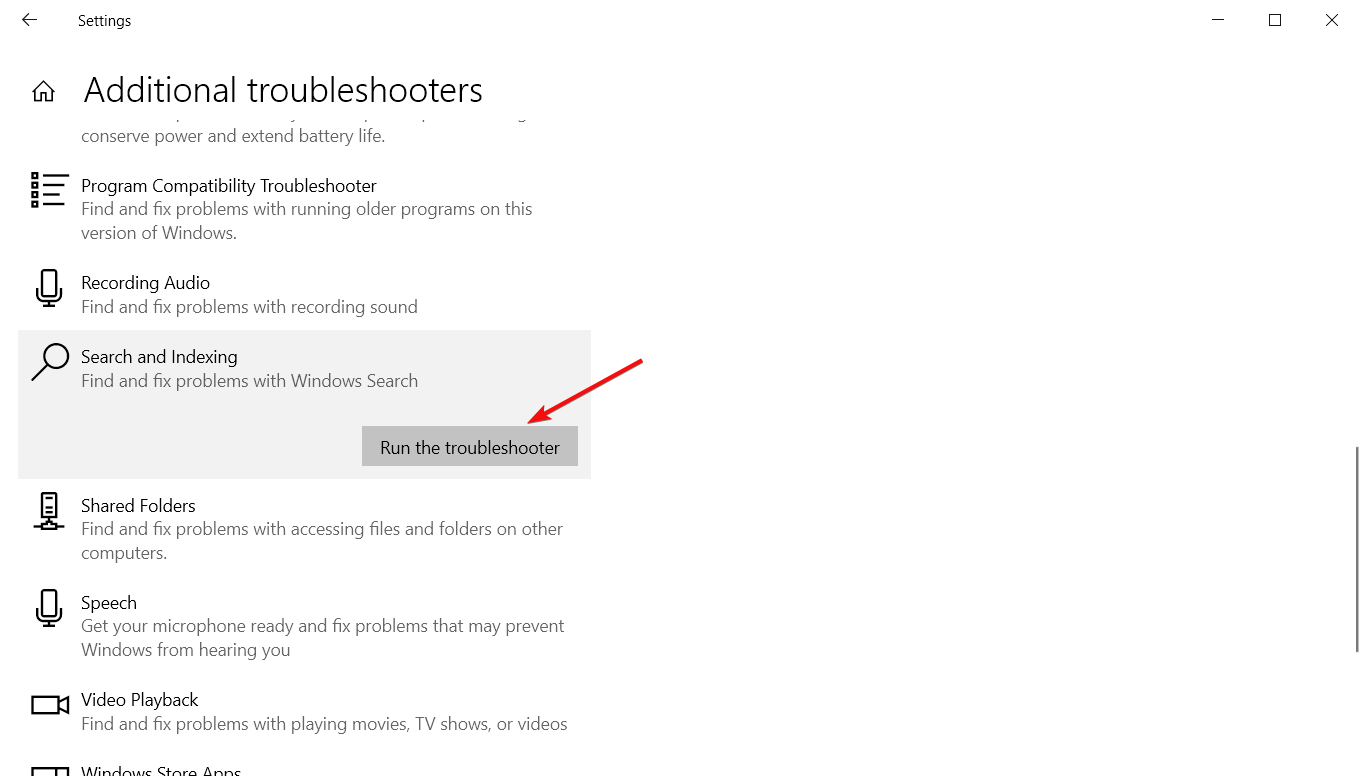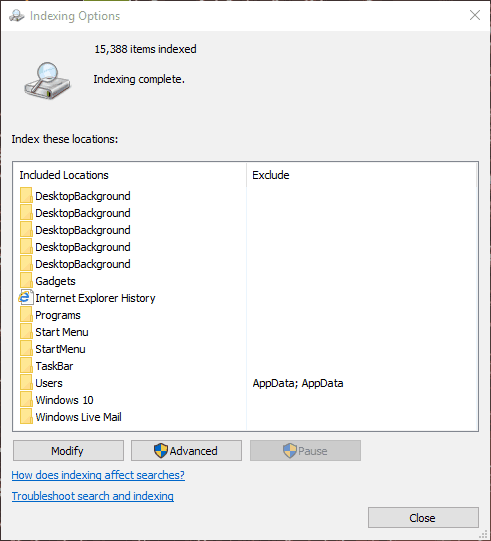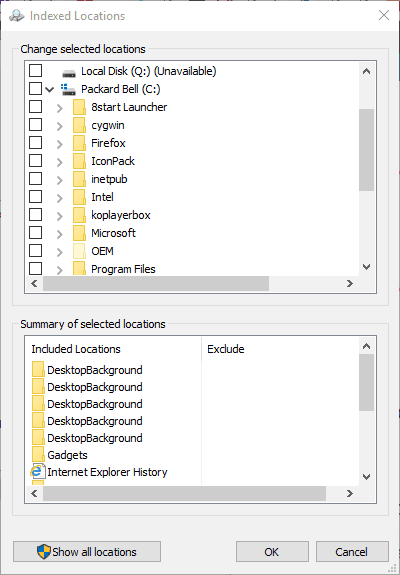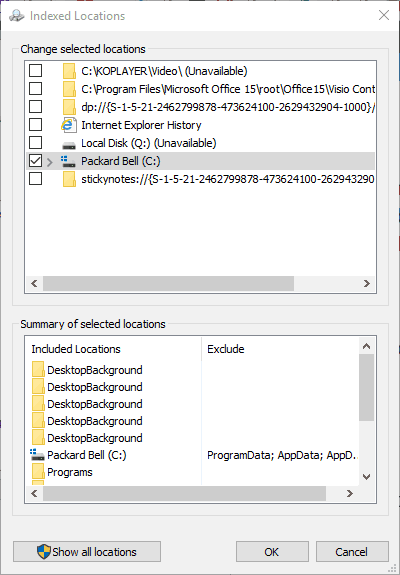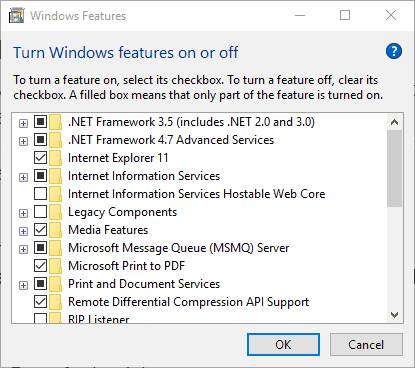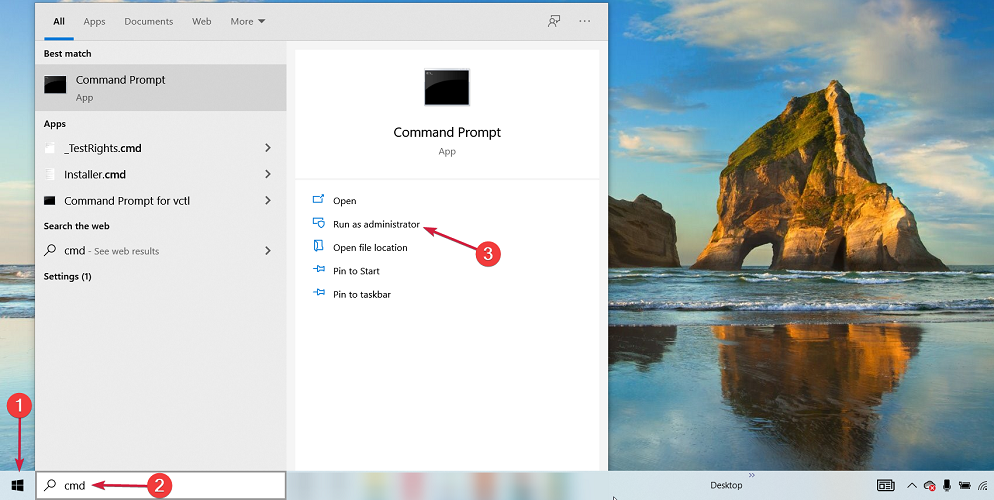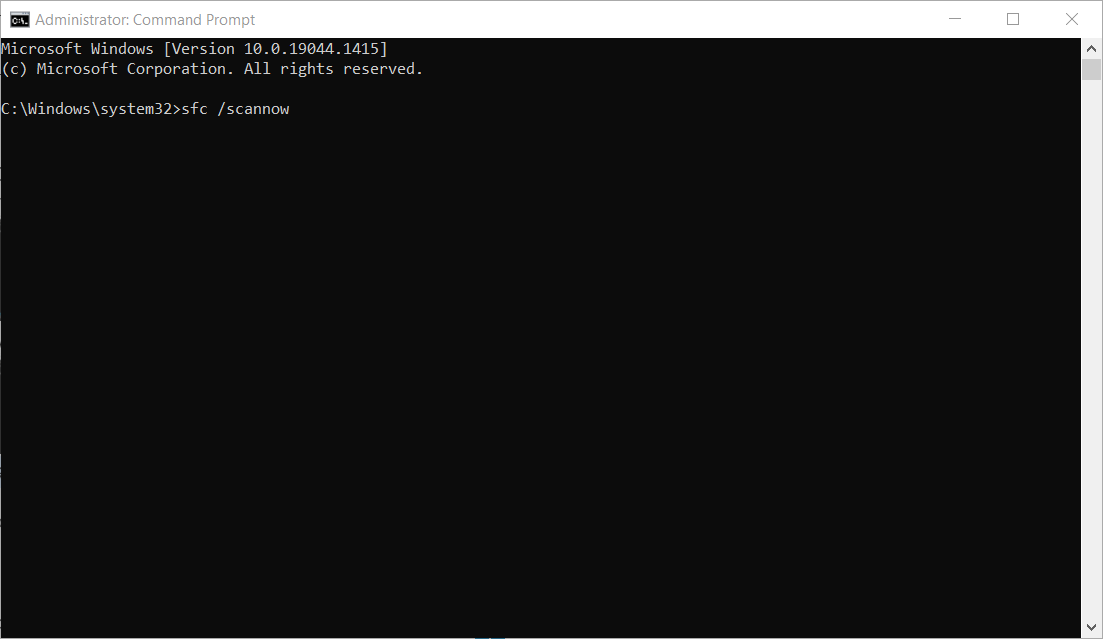Служба Windows Search отвечает за поиск файлов и папок на устройстве. Она способна искать данные не только по наименованию файлов, но и по содержанию этих файлов (метаданным, свойствам и т.д.). Например, поиск по содержанию файлов по умолчанию активирован для текстовых и офисных документов (txt, doc, docx, xls, xlsx, pdf).
На компьютере может быть очень много файлов и папок. Чтобы поиск по устройству не занимал много времени, служба Windows Search использует индексацию файлов. Процесс индексирования представляет собой чтение диска с данными и запись информации о просканированных файлах в базу данных. Индексирование осуществляется в фоновом режиме. Когда вы сохраните новый документ в индексированном расположении, служба Windows Search проиндексирует его и сохранит собранную информацию о нём в своей базе.
Индексатор службы Microsoft Windows Search грузит процессор?
Обычно индексатор службы Microsoft Windows Search не грузит процессор. В нашем случае, когда все файлы проиндексированы, нагрузка на центральный процессор составляет 0%, а объём используемой оперативной памяти составляет порядка 80МБ.
-
На скриншоте видно, что Индексатор службы Microsoft Windows Search в Windows 10 не нагружает процессор, так как все файлы проиндексированы. -
Поэтому, если на вашем устройстве индексатор службы Microsoft Windows Search грузит процессор, это означает, что в настоящее время идёт индексирование файлов. Если вы активно пользуетесь устройством, нажимаете на клавиши клавиатуры, водите мышкой, служба Windows Search замедляет скорость сканирования. В нашем случае при сниженной скорости индексирования нагрузка на процессор составляет 0,6-1,2%.
-
На скриншоте видно увеличение нагрузки на процессор, так как идёт индексирование новых файлов (при сниженной скорости сканирования) -
Конечно, нагрузка будет больше, если процессор относительно старый и имеет одно-два логических ядра. Поэтому приведённые значения нагрузки индексатора службы Microsoft Windows Search на процессор следует считать условными.
Как можно уменьшить нагрузку службы Microsoft Windows Search на процессор?
Определяем папки, которые служба поиска должна индексировать
- Найдите и запустите «Параметры индексирования» в классическом варианте Панели управления.
Как открыть классическую Панель управления?
Несколько простых способов в отдельной статье
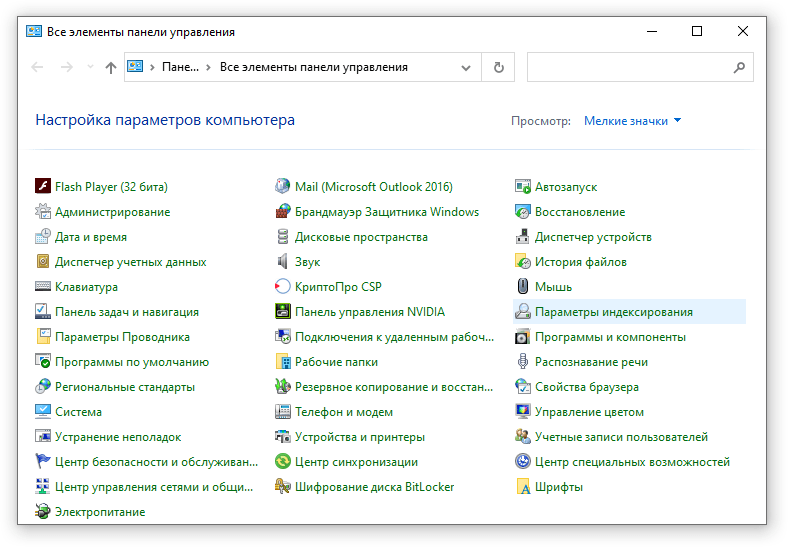
- В открывшемся окне нажмите кнопку «Изменить».
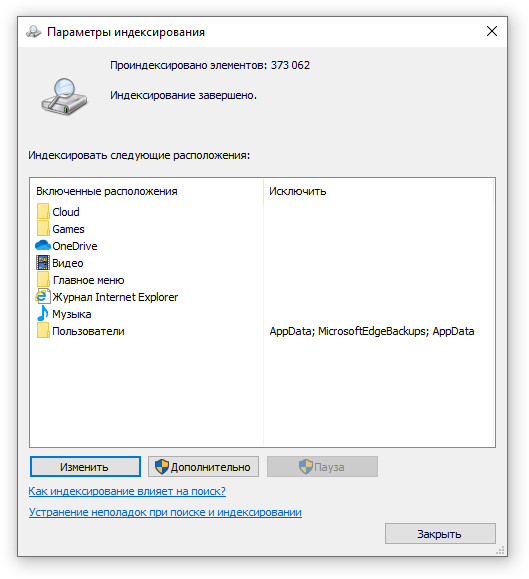
- Отметьте галочками папки или диски, которые вы хотите индексировать в фоновом режиме. Оставьте пустым квадрат, чтобы не индексировать папку или диск. После выбора индексируемых расположений нажмите кнопку «ОК».
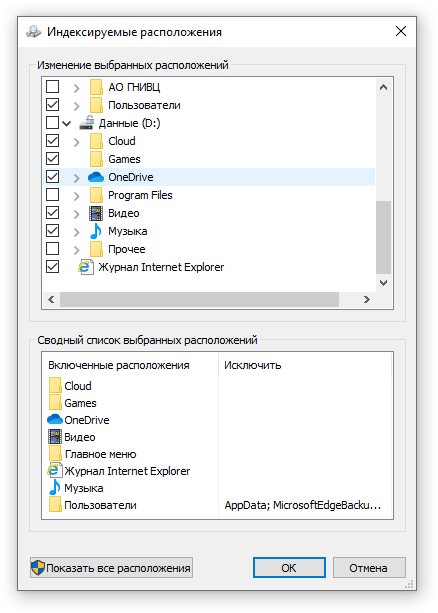
Уменьшив количество папок и дисков в окне «Индексируемые расположения», вы сможете сократить нагрузку индексатора службы Microsoft Windows Search на процессор. Но имейте в виду, что поиск в исключенных расположениях будет долгим. А в случае использования кнопки поиска в панели задач поиск в неиндексированных расположениях осуществляться не будет. Поэтому не старайтесь исключать все папки. Оставьте папки, в которых вы часто используете функцию поиска.
Устанавливаем классический режим поиска
В Windows 10 предусмотрено 2 режима поиска: классический и расширенный. При классическом режиме поиск осуществляется только в библиотеках пользователя и на рабочем столе. Расширенный режим позволяет искать файлы по всему компьютеру, за исключением системных папок. Расширенный режим, как предупреждает операционная система, может снизить уровень заряда и увеличить нагрузку на центральный процессор. Особенно это актуально для владельцев ноутбуков, которым важно, чтобы их устройство проработало в автономном режиме как можно дольше.
- Перейдите в новые «Параметры Windows» (нажмите на клавиатуре кнопку с логотипом Windows + I ).
- Нажмите на раздел «Поиск».
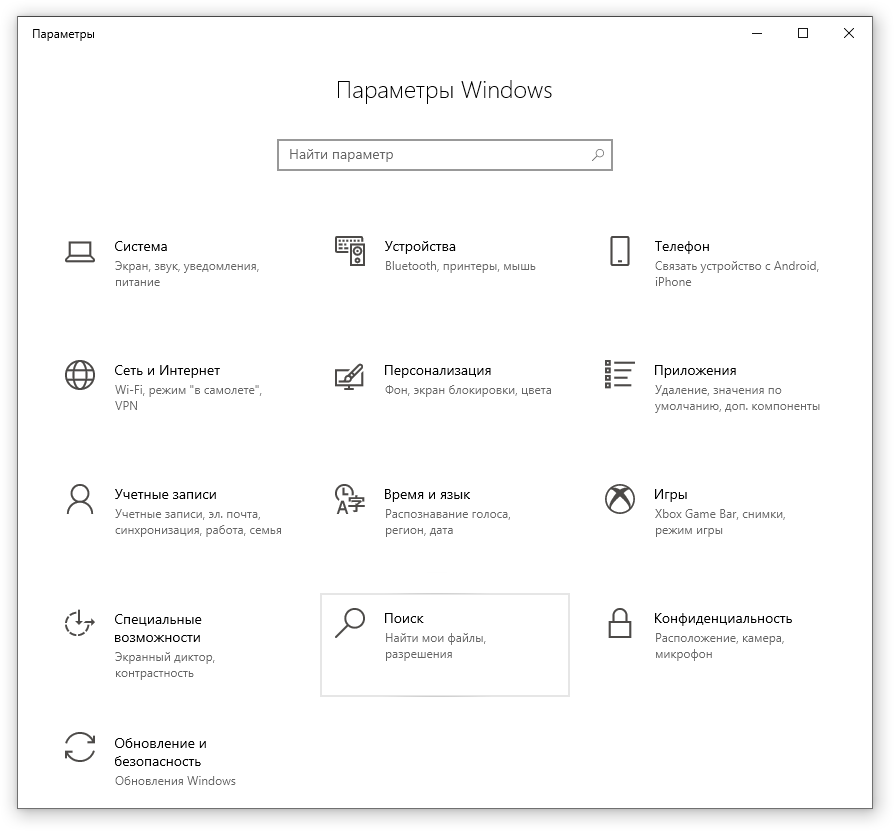
- В левом боковом меню нажмите на «Поиск в Windows».
- Прокрутите список настроек и выберите параметр «Классический стиль».
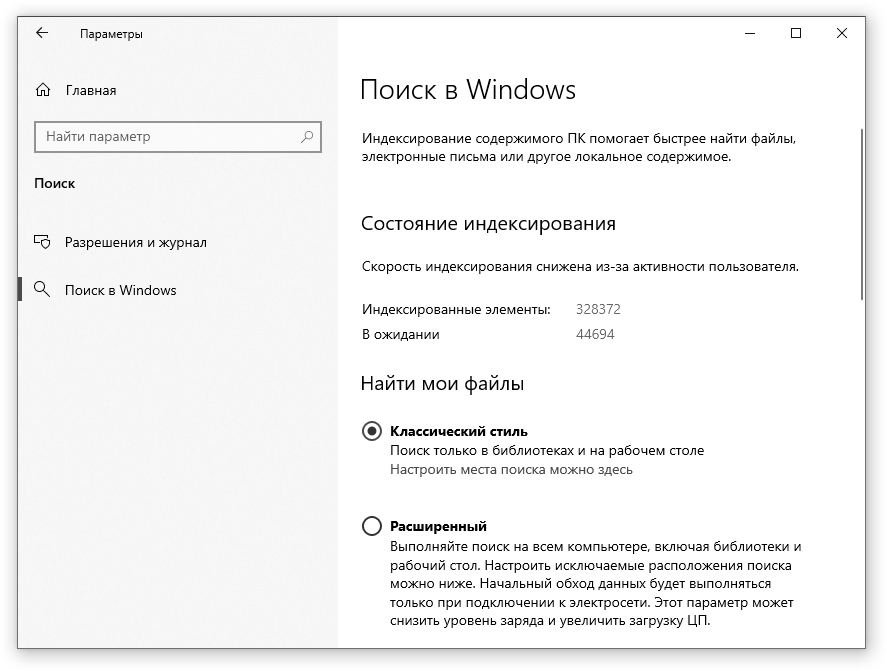
Активируем привязку производительности индексатора к параметрам питания устройства
Изменять режим производительности индексатора стало возможным с момента появления Windows 10 версии 2004 (майское обновление 2020 года). Если включить параметр «Использовать параметры режима питания устройства», служба Windows Search будет оценивать, запущен ли на компьютере режим энергосбережения, пониженного электропотребления или игровой процесс. Если да, то служба поиска приостановит индексацию в фоновом режиме.
Также при включении производительности индексатора служба поиска приостановит индексацию файлов в фоновом режиме, если загрузка центрального процессора превысит 80% или загрузка жесткого диска поднимется свыше 70%.
- Перейдите в новые «Параметры Windows» (нажмите на клавиатуре кнопку с логотипом Windows + I ).
- Нажмите на раздел «Поиск».

- В левом боковом меню нажмите на «Поиск в Windows».
- Прокрутите список настроек и включите параметр «Использовать параметры режима питания устройства».
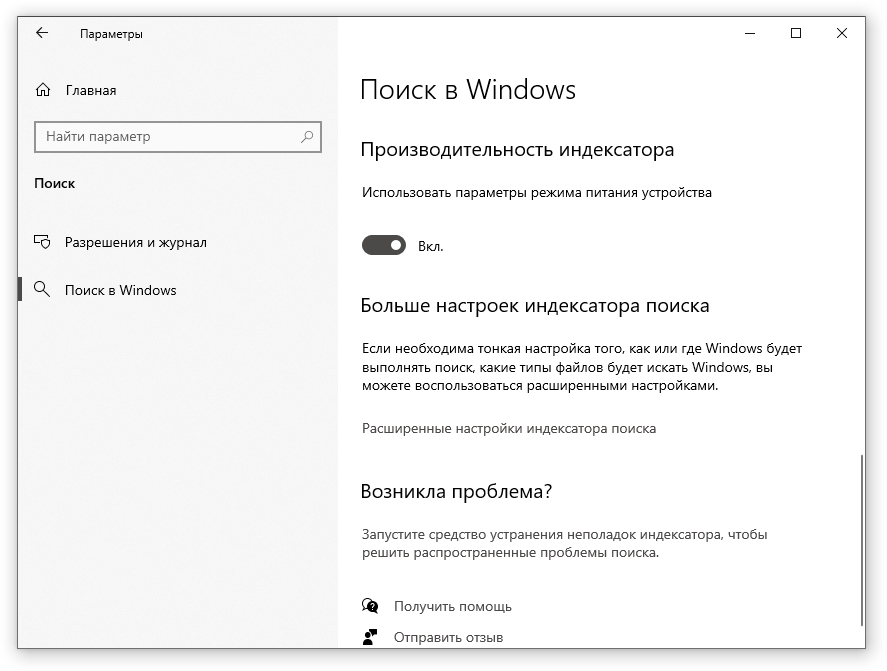
Отключаем службу Windows Search
Отключая службу Windows Search, вы отключите индексирование папок и файлов в фоновом режиме.
Вы сможете осуществлять поиск по устройству, но он будет медленным.
- Запустите приложение «Выполнить» (нажмите на клавиатуре кнопку с логотипом Windows + R ).
- Наберите текст
services.mscи нажмите кнопку «ОК».
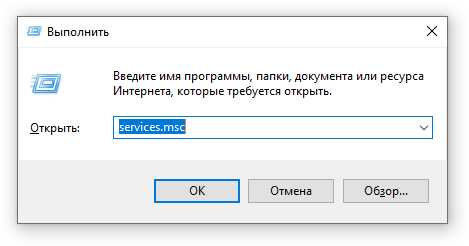
- В открывшемся окне найдите службу Windows Search.
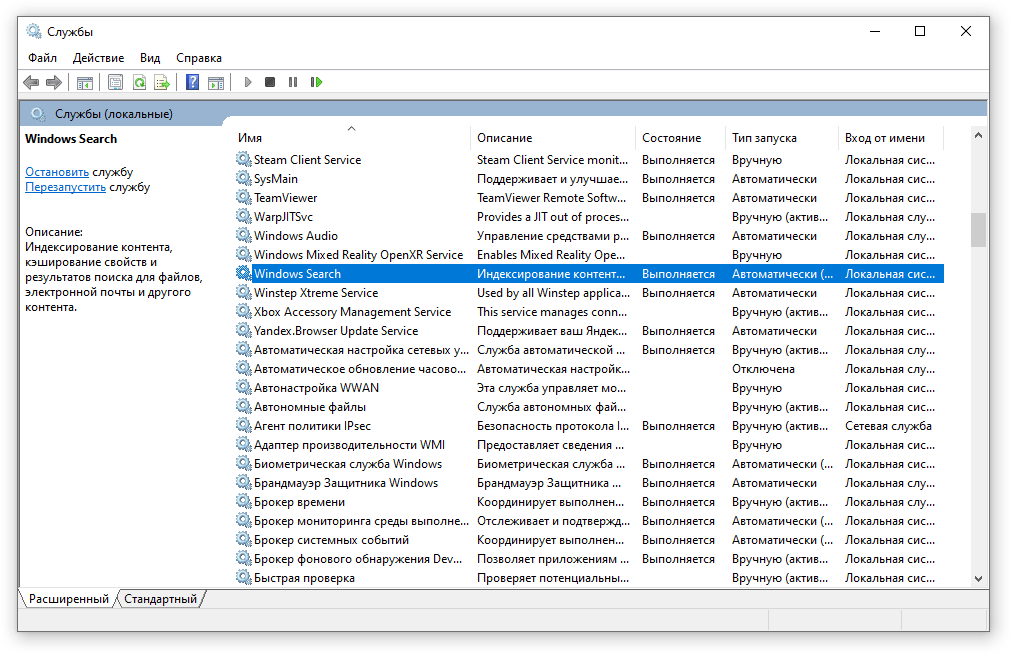
- Дважды нажмите на строку службы «Windows Search». Откроется окно с настройками.
- Выберите тип запуска «Отключена».
- Нажмите кнопку «Остановить», чтобы завершить активный процесс выполнения службы Windows Search.
- Нажмите кнопку «ОК», чтобы сохранить настройки службы.
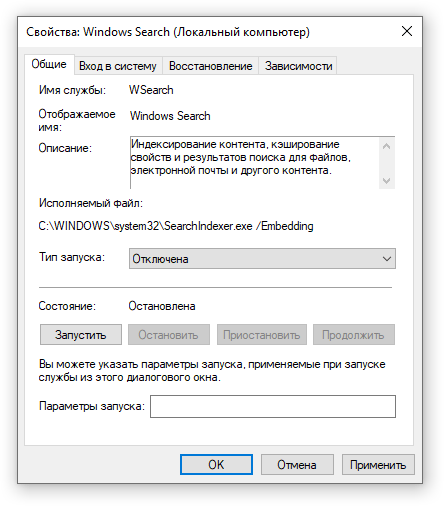
А как у вас работает служба поиска в Windows? Испытываете ли вы проблемы при ее работе в фоновом режиме?
Расскажите о своем опыте в комментариях 😉
If you’re using Windows 11 and notice your computer is running slow or acting weird, with the CPU and disk going crazy, know that this can happen very commonly. A usual suspect for this mess is something called Windows Search Indexer. This tool actually helps speed up your search for your files and folders. In this guide, we’ll talk about what Windows Search Indexing is, why it might make your computer use more CPU and disk space, and how to fix the problem.
Also see: Windows 11 search slow? How to speed up search in Start and File Explorer
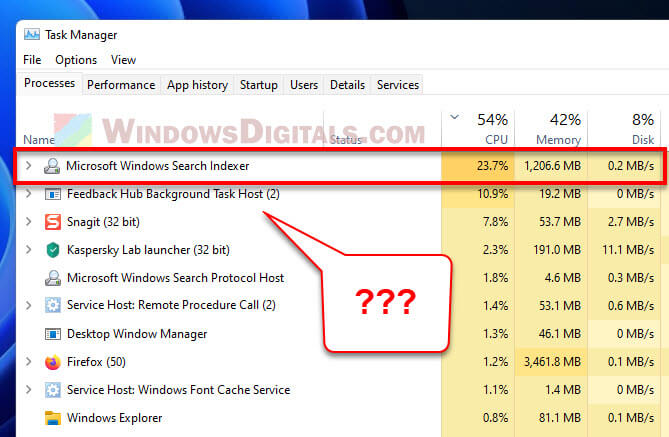
What is Microsoft Windows Search Indexing?
Windows Search Indexing is a very useful feature that makes finding files and folders on your computer much quicker than without it. It creates a special database with information about all your files so that Windows can locate them fast when you’re searching.
By default, this tool goes through most files on your computer, like your documents, pictures, and music.
Why does Windows Search Indexing use a lot of CPU and Disk resources?
The indexing process needs to use a significant amount of CPU power, memory, disk’s reading and writing, as well as disk space. It is because it has to run through and check every single file on your computer to make them into the index. The process can also take a while. If you have lots of files or an relatively older hard drive, the search indexing will consume more time and make your computer slow as it runs in the background.
- If your computer stores many files, the Windows Search Indexer will need more time to scan and index them.
- Whenever you add, delete, or change files, the Windows Search Indexer has to scan and index these files again. This is especially true if you make big changes to many files at once.
- If your computer’s processor isn’t very powerful, or if you’re still using HDD instead of SSD, the Windows Search Indexer might struggle to run the indexing and searching.
- Sometimes, the Windows Search Indexer service might have issues or stop working properly.
Learn: How to Limit CPU Usage of a Process in Windows 11
Let the search indexer finish its job
If your computer is slow because of the indexing process, the best first step is to just let it finish. It usually works in the background, so it might take some time. If you leave your computer on overnight, it should get done. Once it’s finished, your computer’s CPU and disk usage should go back to normal.
Related issue: High CPU Usage After Windows Update
How to turn off Windows Search Indexer in Windows 11
If you rarely search your PC for files or you don’t mind having a slower search (much slower just for your information), you can consider turning off the Windows Search Indexer service completely. Doing so will stop it from ever running again, no matter if you make changes to your files or not. Here’s how you do it.
- Open the Start menu and type “Services” in the search box.
- Choose “Services” from the search results.
- Find “Windows Search” in the list.
- Right-click “Windows Search” and pick “Properties”.
- In the “Startup type” menu, choose “Disabled”.
- Hit “Apply” and then “OK”.
What happens if you turn off Windows Search Indexing
Turning off Windows Search Indexing can really change how your computer performs. Searches will take longer, and if you ever turn indexing back on, you’ll have to rebuild the database from scratch.
Check for apps that change files a lot
As mentioned, when files get changed, the indexer has to update. If you have apps that often modify files, like backup or syncing software, they can make the indexer work overtime. If your computer is slow and uses lots of CPU or disk space, check if any apps are frequently changing files. You might need to tweak these apps to reduce the changes they make.
Choose fewer folders for indexing
You can also lighten the load on Windows Search Indexing by choosing fewer folders to index. This means the indexer only checks those folders, which can help reduce CPU and disk use.
- Search for “Indexing Options” from the Start menu.
- Pick “Indexing Options” from the results.
- Hit the “Modify” button.
- Uncheck any folders you don’t want indexed.
- Click “OK” to save your settings.
Restart Windows Search Services
If the indexer gets stuck or isn’t working right, try restarting the Windows Search Services. This stops and starts the indexing process again.
See also: How to Unpause Indexing in Windows 11
- Go to the Start menu, search for “Services”, and open it.
- Find “Windows Search” in the list.
- Right-click it and choose “Restart”.
Rebuild the index
Sometimes the index might have problems and keep indexing the same files over and over, which uses lots of CPU and disk space. If this happens, you might want to rebuild the index.
- Hit Start and search for “Indexing Options”.
- Choose “Indexing Options” from what comes up.
- Click the “Advanced” button.
- Press the “Rebuild” button.
- Hit “OK” to start rebuilding.
Keep in mind, rebuilding the index can take a while, depending on how many files and folders need to be looked at.
Do a clean install of Windows 11
If nothing else works and your computer is still slow because of Windows Search Indexing, you might need to do a clean install of Windows 11.
To do a clean install, you’ll need to make a bootable USB drive with Windows 11 on it, then start your computer from that USB. Follow the steps on the screen to install Windows 11. You’ll get the option to delete all the old stuff on your hard drive and start fresh.
One last thing
Check your computer’s power settings and make sure it’s not on power-saving mode. If your PC is set to save power, your computer will not use its resource to its fullest and will slow things down, such as the indexing process. Try to switch the power mode to either “Balanced” or “High Performance” and see if it fixes your issues. Note that doing so will cause your computer (especially laptop) to use more power, meaning your battery will run out faster if you’re not plugged in.
Are you seeing High CPU Usage by Windows Search Indexer/Searchindexer.exe in Task Manager?
Or
You don’t know what even Microsoft Windows Search Indexer is?
Recently, users have reported that on average Searchindexer.exe uses 50 to 60% of the CPU but from the past few days when they opened the Task Manager, they saw that searchindexer exe Microsoft Windows search indexer using almost 90% of the CPU due to which their PC performance is getting low.
First of all, you don’t need to worry much because you are not alone in this and many users were trying some wrong fixes for searchapp.exe on Windows 11.
But,
We have compiled a list of the best solutions for you to fix the searchapp.exe error.
Before going to the fix, there will be some important questions regarding the Windows Search Index that might be in your mind.
What is SearchIndexer exe?
SearchIndexer exe is an executable file and stands for Microsoft Windows Search Index Builder and was introduced in Windows XP,7, 8, and can also be found in the latest versions of Windows 10 and 11 as well.
Microsoft Windows Search Indexer was originally known as Windows Desktop Search (WDS) and plays an important role in indexing files for Windows search meaning it keeps looking for the location of different files in the background and powers Windows File Explorer or Start Menu.
Searchprotocolhost.exe Microsoft Windows Search Indexer CPU is allocated in C:/Windows/System32/ folder and the file size is almost 427,520 bytes.
Is SearchIndexer exe a virus?
It’s totally safe as SearchIndexer exe digitally signed by Microsoft Corporation.
As it is legitimate but hackers can still attack the program to make changes and carry out their illegal activities through searchindexer.exe
Also, we can clear our doubt that searchindexer exe Microsoft Windows search indexer is a virus or not by checking the file location as it should be located in its default file location when it was originally developed.
But still, to be on the safe side you can check if there’s a virus or not through Task Manager:
- Press together Ctrl + Shift + Esc keys to open Task Manager.
- Go to Details and look for searchindexer.exe
- Also on the right pane of the window, under the description column make sure its name is correct.
- Right-click on it and select Open file location.
- If it is located at C:\Windows\System32
And if it’s not in the given address, then it might be a virus or spyware.
Also Read: FIX: Microsoft Compatibility Telemetry?
Video Guide: FIX: Searchindexer.exe? What is Microsoft Windows Search Indexing?
Solution 1: Performing a Clean Boot Using MSConfig
Clean boot will help you to eliminate the unnecessary applications which are running on the backend.
Also, it will help fix Windows Search Indexer High CPU usage and will replace the corrupted file that is helping in high CPU usage.
And shut down any applications which are conflicting with each other.
How do I perform a clean boot in Windows 11?
Here is how to perform a Clean Boot on Windows 11:
- Press Windows Button + R Key
- The Run Dialogue Box will appear
- Type “msconfig“ and press Enter.
- The System Configuration window will open
- In the General tab uncheck the:
- Load system services; and,
- Load startup items
as this will only use services issued by Microsoft when your PC will reboot.
- Now Select the Services tab and uncheck all the unnecessary service
- Only check those who are not using high CPU usage.
- Now click OK
- And your clean boot is done and the unnecessary services are eliminated
After restarting, your PC your searchindexer.exe error on Windows 11 will be fixed.
Also Read: MMC.exe Error Blocked
Solution 2: Run Search and Indexing Troubleshooter to Fix Windows Search Indexer
This Search and Indexing will look for errors all-around your PC and will fix them.
Moreover, the corrupted files that will get fixed with it will also solve searchindexer.exe high CPU Usage.
How do I fix SearchIndexer exe?
So, here’s how you can fix searchindexer.exe by running Search and Indexing troubleshooter:
- Click on the Search icon
- Select Control Panel.
- Now look for Troubleshooting
- In the left pane click on View all.
- Now double-click on Search and Indexing
After the troubleshooting is done, you need to run your Windows in Safe Mode.
And, you can do this by following the steps below:
- Press Windows Button + R Key
- The Run Dialogue Box will appear
- Type “msconfig“ and press Enter
- The System Configuration window will open and then click on the Boot tab.
- Now checkbox the Safe boot option.
- Then click on Apply and OK for the system to reboot in safe mode.
- After rebooting check if Windows Search Indexer high CPU usage is fixed or not.
If booting in safe mode didn’t fix searchindexer.exe continue to the next solution.
Also Read: LockApp.exe? What’s It? Is It Safe?
Solution 3: Scan System File to Fix Searchindexer.exe High CPU usage
Most errors are caused by corrupted files, so start by checking the system files to fix the Microsoft Windows Search Indexer error
If you are wondering How do I scan all missing system files?
All you need is the DSIM tool which will replace missing files.
While typing commands be careful at the spaces between ‘/’ and word.
How Do I Run the System File Checker in Microsoft Windows?
So here’s what you need to do to fix the Microsoft Windows search indexing:
- Search by pressing the Window key and type “Command Prompt“
- Right-click “Command Prompt” and select “Run as Administrator“. The option is available in the right pane of the window too.
- Type “DISM.exe /Online /Cleanup-image /Res and press Enter.
- It Might take up to 30 minutes to complete the process
- Once the operation is completed successfully, type “sfc /scannow” in the command line and then press the Enter key.
- If there were any corrupted files you would see the following message on the command line: “Windows Resource Protection detected corrupted files and successfully restored them.”
- If so, type exit and hit enter.
- Searchindexer.exe error corrupted files would have been fixed by now.
- You can restart your windows and check if the Microsoft Windows Search Indexer high CPU usage error in Windows 7 exists.
If the above solution didn’t fix the Windows Search Indexer then move on to the next solution.
Solution 4: Changing Indexing Option
Another reason for Microsoft Windows Search Indexer is due to the indexer which cannot find some files in the system.
So it’s better to make some changes to the indexing option.
How To Change Advanced Indexing Options in Windows?
And here’s how to change the indexing option:
- Click on the Search icon and type Indexing Options.
- Now click on Modify.
- Click on Show all Locations and uncheck local disk C location and other file locations which cause high CPU usage.
- Now restart your PC and check if the Windows Search Indexer is fixed or not.
What is Indexing in Windows?
Indexing in Windows meaning that it keeps looking for the location of different files in the background and powers Windows File Explorer or Start Menu.
Should I disable indexing Windows 11?
Yes, you can disable indexing on Windows 11 if you are not using the search feature that much and you use any other program for desktop search.
Does indexing slow down computer?
Yes, indexing can slow down a computer if you have a low processor or a hard disk also your PC performance will get low and the search feature won’t work fast.
Also Read: FIXED: WaasMedic Agent.exe High Disk Usage?
Moving on to solution 5 for searchindexer.exe high CPU usage.
Solution 5: Scan For Virus and Threats to Fix Windows Search Indexer High CPU Usage
When you download something from a malicious website you may download a virus with it.
Can a virus cause High CPU usage?
Yes, a virus can cause high CPU usage as they mostly try to replicate themselves through an exe file.
Although you have an antivirus installed on your PC still it can’t protect your system 100%.
Also, it can lead to searchindexer.exe High CPU/RAM/Network usage.
So, to overcome Microsoft Windows Search Indexing High CPU Usage in Windows 11 it’s best to scan for viruses using the Windows 11 built-in virus protection software.
How can I fix searchindexer.exe high CPU usage?
Here’s how you can scan your PC for viruses and threats:
- Click on the Search icon
- Select Settings.
- Now click on Privacy & security > Windows Security
- Select Virus & threat protection and click on Quick scan.
- Wait for the scan to finish and it will let you know how to deal with the virus either remove or block it.
- Then restart your PC to see Microsoft Windows Search Indexer CPU is fixed.
Having a High CPU Error CHECK OUT: What is Acrord32.exe?
If none of the above solutions have worked for you in fixing Windows Search Indexer then continue to the last solution.
Solution 6: Disable Windows Search to Fix Microsoft Windows Search Indexer CPU
Disabling Windows Search will help you get over Windows Search Indexer high CPU usage but you should know that Windows search is an important service for Windows and can have drawbacks when you disable it.
But you can disable it when you don’t need it in near future.
How do I turn off Windows Search? Can I stop SearchIndexer exe?
So, here’s how you can disable/stop Searchindexer.exe through Windows search:
- Press Windows key + R to open the Run window.
- Then type services.msc and click OK to enter the service app.
- Scroll down and find Windows Search and double-click the Services to open its properties.
- In the Startup Type section choose Disabled from the drop-down list.
- If the Service status is Running then click on the Stop button.
- Click on Apply and then select OK.
- After restarting your PC check if the searchindexer.exe high CPU usage is fixed or not and you can enable Windows search using the same steps once your error is solved.
What happens if you disable Windows Search service?
Yours Windows OS will stop indexing files so it will take a long time to search files every time.
Is it OK to disable Windows Search?
Yes, it’s totally okay to disable Windows search as long as it’s using a high CPU. And you can enable it when your error is fixed.
Conclusion
So, these are the best fixes we could get for you in fixing Windows Search Indexer High CPU Usage in Windows 11 and
Disabling searchindexer.exe from your system is not that much of an easy job and also we don’t recommend it to so that’s why we have provided you with the best possible solutions.
It’s best you try all the solutions and if you have any other fix related to Microsoft Windows Search Indexer CPU or any type of question then just let us know in the comment section below.
FAQs
-
How do I get rid of searchindexer.exe?
You can get rid of searchindexer.exe by following the list below:
1. Update your Windows.
2. Disable Windows search feature.
3. Scan for malware -
What does .exe mean?
It’s a short form of an executable file and helps Windows run and install the software.
-
Is searchapp.exe safe?
searchapp.exe is not a virus unless it replicates itself or harms your computer so it’s totally safe
-
Where is searchindexer exe located?
searchindexer exe is allocated in C:\Windows\System32 where it was store default when developed.
Zul is an avid gamer with a passion for RPG and racing games. He enjoys playing games like Need for Speed and Grand Theft Auto 5 and is also skilled at fixing errors and crashes to enhance the gaming experience. Zul stays up-to-date with the latest gaming news and enjoys sharing his knowledge through writing gaming guides and articles.
Follow him on Twitter
Readers help support Windows Report. We may get a commission if you buy through our links.
Read our disclosure page to find out how can you help Windows Report sustain the editorial team. Read more
The Windows Search service is one that indexes files for the Windows search tool. That service is the SearchIndexer.exe or Windows Search Indexer process listed on Task Manager’s Processes tab.
However, some users have found that the Search Indexer process can hog a lot of system resources with high CPU and RAM usage.
Why is Microsoft Windows Search indexer running?
The Windows Search indexer can be a bliss just as much as it can be a nuisance and here’s why. Its role is to handle file indexing and thus speed up the search process on your PC.
When it’s running, you find whatever it is that you’re looking for faster. But it can also slow down your drive and affect your overall performance since it’s a relatively resource-intense process, to begin with.
Now, turning the Windows 10 indexing off in order to cut down on the Searchindexer.exe high CPU makes sense if you have a fast drive such as SSD as it can handle the search and retrieval of results on its own.
As always, the right configuration implies balancing different components, but if the Windows desktop search support high CPU becomes unbearable, you can rest assured that disabling the service -at least temporarily – won’t affect your system in any way.
You can always download Indexer Diagnostics to fix Windows Search issues, including high resource consumption instances. If not, feel free to check out our handy solutions to reduce the Windows search’s high CPU utilization.
? Microsoft Windows Search indexer high CPU on Windows 11
Before we move on with the solutions, let’s take a moment to see if and how the Windows desktop search support high CPU issue also applies to Windows 11. In short, yes, it does.
The good news is the solutions listed below will work just as well on the latest version of your OS. In addition, you can also perform these steps:
- Update your drivers on the Windows 11 OS
- Run SFC and DISM commands
- Perform a System Restore to a point previous to the issue
In some cases, the Windows 11 Search Indexing can be turned off completely, so might want to enable it again.
How do I fix Windows Search Indexer high CPU?
1. Use a third-party repair software
If you’re having issues with Search Indexer’s high CPU usage, you should be able to fix it using specialized repair software that can fix a wide array of PC issues automatically.
The software will scan your PC for any problems and give you a list of issues. You can fix all these issues with just a couple of clicks without any additional user input.
These tools can fix a wide array of Windows errors, missing DLL files, BSOD errors, freezes, crashes, and, most importantly high CPU usage, so be sure to check them out.
2. Restart the Windows Search Service
-
1. You can start by pressing the Win + R hotkey and entering services.msc in Run‘s text box.
-
2. Press Run‘s OK button to open the Services window.
-
3. Scroll down to Windows Search.
-
4. Double-click Windows Search to open its configuration settings shown directly below.
-
5. Select Disabled from the Startup type menu.
-
6. Press the Stop button.
-
7. Press the Apply and OK buttons.
-
8. Restart your PC.
-
9. Thereafter, open the Windows Search service window again.
-
10. Select Automatic (Delayed Start) from the Startup type drop-down menu.
-
11. Click the Start option, and then press the Apply and OK buttons to restart Windows Search.
Restarting the Windows Search service might reduce the Search Indexer’s CPU usage. You can do this using the built-in Run dialog, which allows you to access Windows Search Properties.
After restarting the services, the problem with searchindexer.exe high CPU usage should be resolved.
- How to fix Windows 11’s Search indexing was turned off error
- What’s drive indexing on Windows 10 and how it works
- Windows 10/11 File Explorer search not working
- How to disable the search functionality on Windows 11
3. Run Search and Indexing Troubleshooter
- Click the Start button and select Settings.
- Now select Update & Security from the menu.
- Click on Troubleshoot from the left pane and Additional troubleshooters from the right.
- Select the Search and Indexing troubleshooter and hit the Run the troubleshooter button.
- Follow the on-screen instructions to fix the issue.
This can help fix other issues like search results aren’t quite ready yet.
4. Reduce Indexed Locations / Data
- To open Indexing Options, press the Cortana taskbar button.
- Enter indexing in the search box. Then click Indexing Options to open the window shown directly below.
- Press the Modify button to open the Indexed Locations window.
- Click the arrow beside the C: drive to expand its folders. Now you can deselect some of the check boxes to remove indexed locations.
- Press the OK button on the Indexed Locations window.
- Click Close on the Indexing Options window.
Reducing the amount of data the Search Indexer is indexing is one of the best ways to fix Windows Desktop Search support high CPU usage.
Users also complained about the delayed write failed error but the highlighted guide will help you fix it.
5. Rebuild the Index
- Open Indexing Options as outlined above.
- Click the Modify button, and deselect all the selected locations except the C: drive, as shown below.
- Click OK to return to the Indexing Options window.
- Press the Advanced button to open the tab shown directly below.
- Press the Rebuild button on the Index Settings tab.
- That will open the dialog box shown directly below. Press the OK button to confirm and rebuild the index.
Users reported that rebuilding the index fixed the searchindexer.exe high CPU usage, so we encourage you to try that.
6. Disable Windows Search Indexer
- Enter the keyword windows features in the Control Panel‘s search box.
- Click Turn windows features on or off to open the window directly below.
- Deselect the Windows Search check box.
- Press the OK button to confirm the new settings.
- Reboot your desktop or laptop.
7. Run System File Checker
- Click the Start button, type cmd, and select Run as administrator from the results.
- Write or paste the following command and press Enter to execute it:
sfc /scannow - The process will start and the system files will be repaired. Wait until it is finished, then restart your device.
Should I disable indexing in Windows 10?
Digital indexation allows you to locate content faster by using specific filters such as keywords or creation dates. Now, if you don’t really search for files that often or if you use an SSD that can quickly retrieve files, it does not make much sense to keep indexing on.
The same goes for Microsoft Windows Search Indexer high CPU cases as you can easily get stuck at 100% disk usage.
This might be a more drastic resolution, but it will help with the Searchindexer.exe high CPU consumption rates. Don’t worry, this does not mean you won’t be able to use Windows Search at all.
Plus, if you need a replacement for Windows Search after switching it off, there are plenty of alternative third-party search utilities.
For example, you can install the freeware Agent Ransack, Copernic Desktop Search Lite, or UltraSearch. Agent Ransack is a highly-rated search software that has Lite and Pro versions.
So that’s how you can cut the Windows Search’s CPU and RAM usage down to size. That will free up system resources for other software and might also speed up the Windows OS a little.
Matthew Adams
Windows Hardware Expert
Matthew is a freelancer who has produced a variety of articles on various topics related to technology. His main focus is the Windows OS and all the things surrounding it.
He is passionate about the tech world, always staying up-to-date with the latest and greatest. With an analytical view, he likes problem-solving, focusing on errors and their causes.
In his free time, he likes to read and write about history and tries to always develop new skills.
Microsoft Windows Search Indexer, or searchindexer.exe, is a crucial process that powers Windows Search. It indexes the files and folders on your computer and, given its nature, consumes lots of CPU at sporadic intervals. However, if CPU usage remains high for prolonged periods, it may indicate an underlying problem that needs to be addressed.
In this tutorial, we’ll show you how to tackle high CPU and disk usage caused by the Windows Search Indexer with various suggestions and solutions for Windows 10 and 11.

Restart Windows Search Service
It’s best to begin by restarting Windows Search on your computer. That should resolve minor technical issues and reduce high CPU usage caused by the searchindexer.exe process. To do that:
- Right-click the Start button and select Run. Or, press Windows + R.
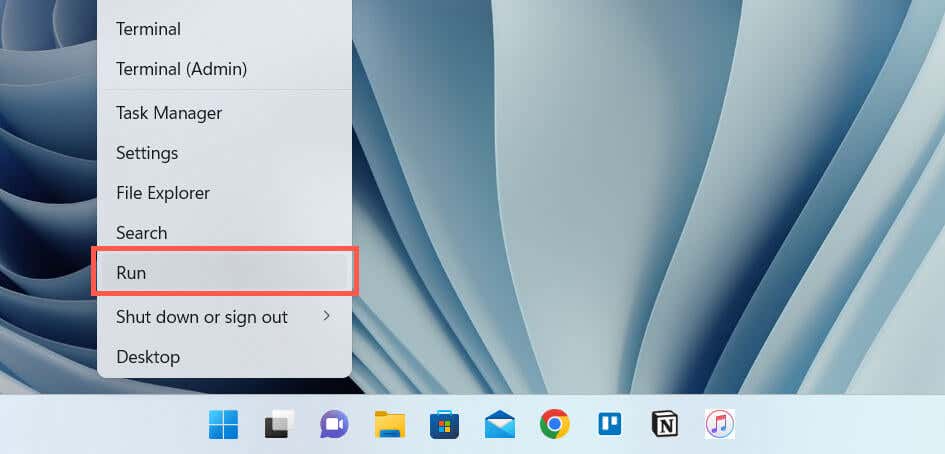
- Type services.msc into the Run Box’s Open field and select OK.

- Right-click the service labeled Windows Search and select Restart.
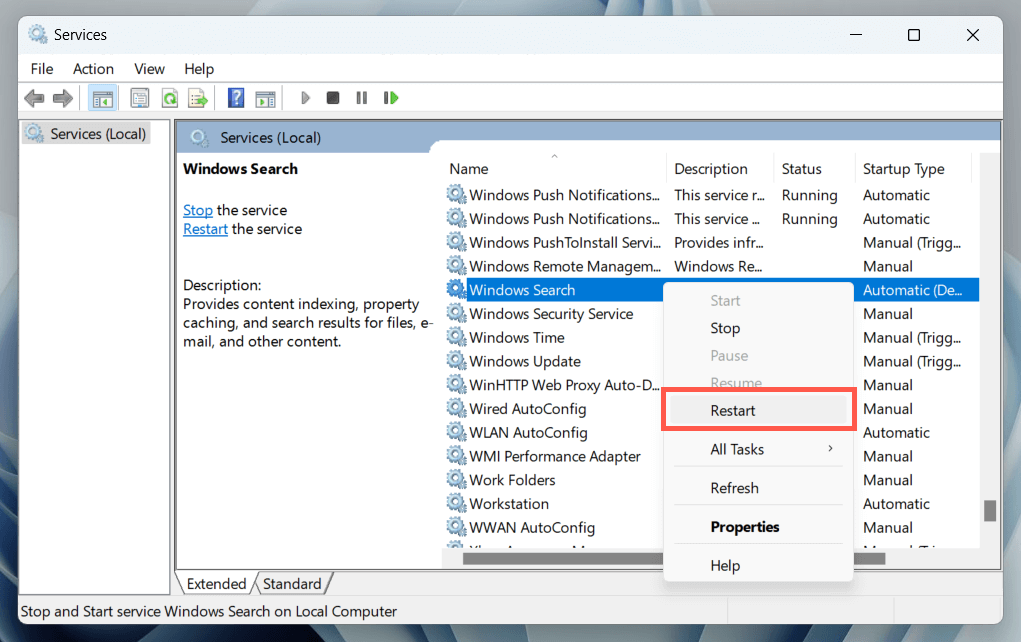
Optionally, double-click Windows Search and ensure that Startup type is set to Automatic (Delayed Start).
Restart Your PC
A PC reboot clears out additional software-related anomalies that interfere with system-related processes. Save your work, open the Start menu, and select Power > Restart. If that makes no difference, move on with the rest of the fixes.
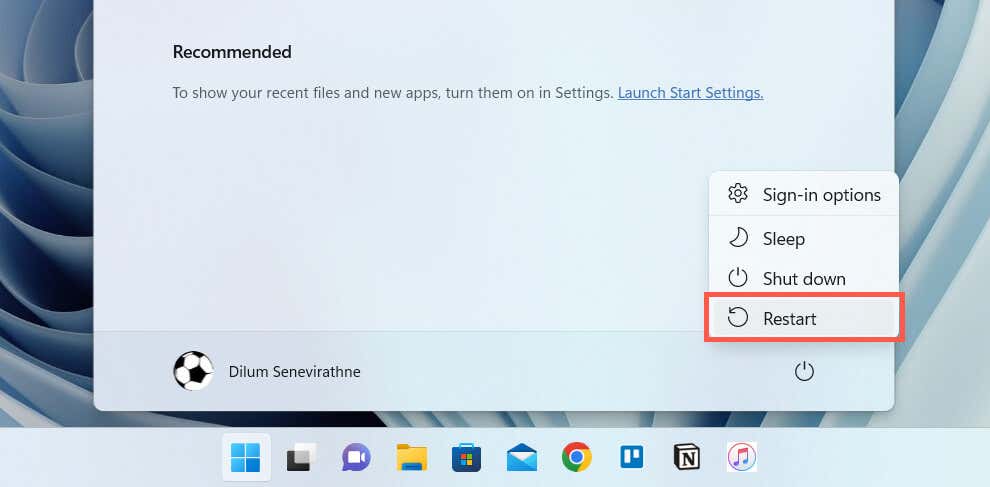
Run Search and Indexing Troubleshooter
Windows 11 and 10 have a built-in troubleshooter that helps diagnose and fix issues related to Windows Search. To run it:
- Right-click the Start button and select Settings.

- Go to System > Troubleshoot.
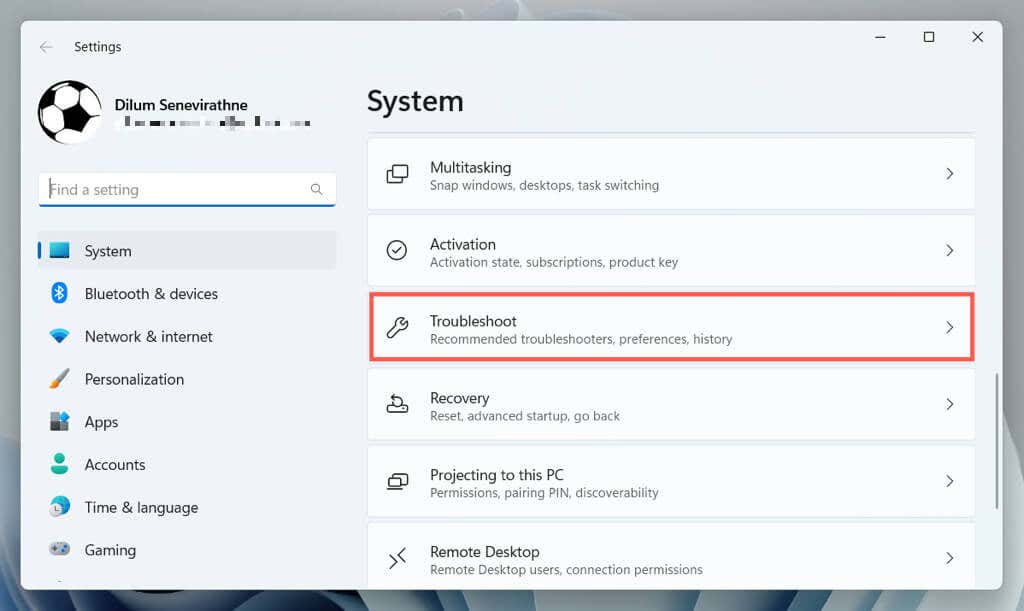
- Select Other troubleshooters/Additional troubleshooters.
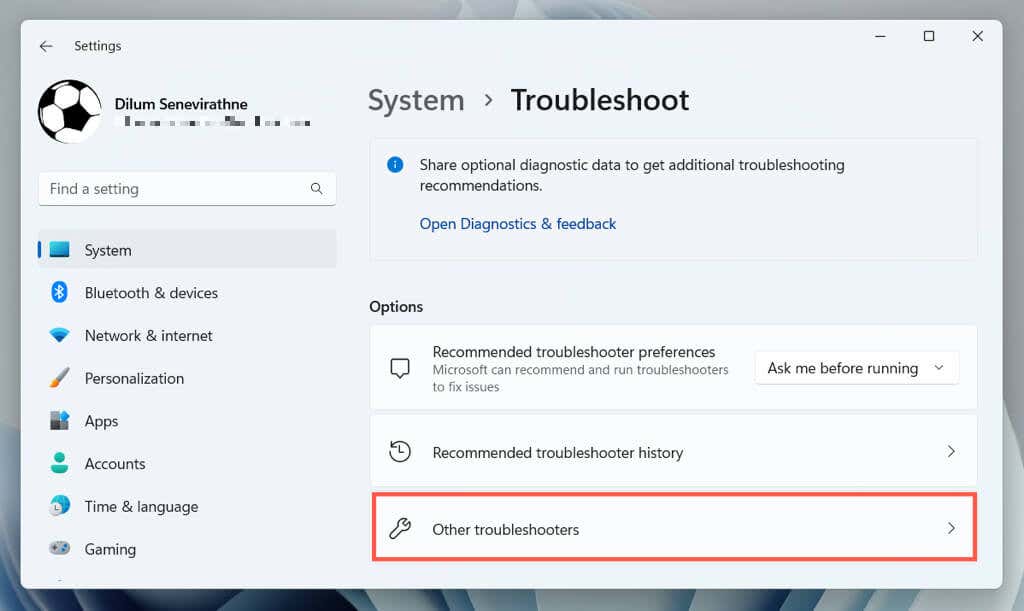
- Select Run next to Search and Indexing.
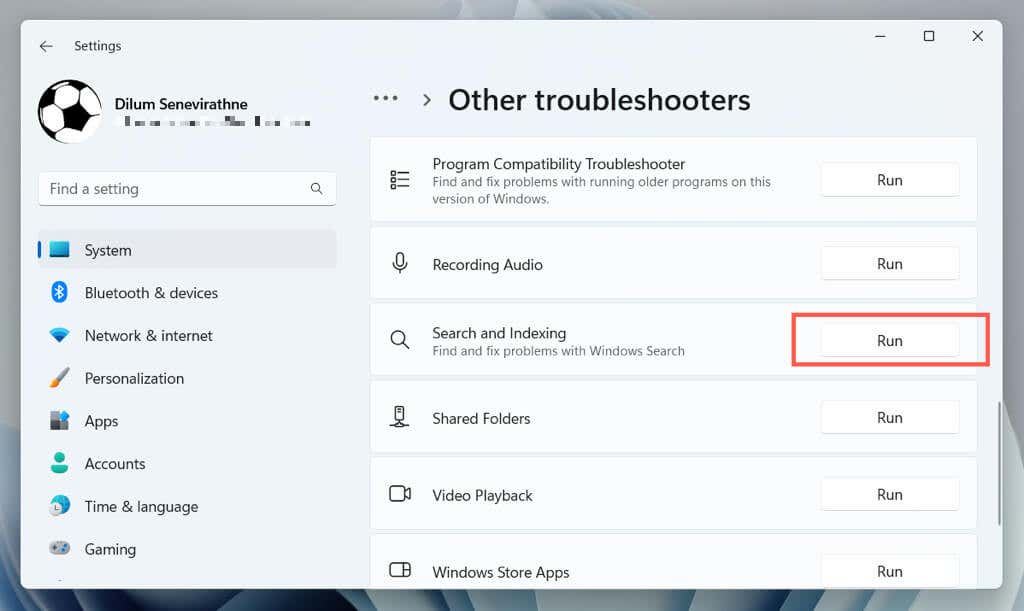
- Follow the onscreen prompts to fix issues with Windows Search.
Rebuild Index
Corruption issues within the Windows Search index often lead to erratic behavior with related processes. Use the Control Panel‘s Indexing Options console to rebuild the index from scratch.
Note: Rebuilding the search index takes time and causes high CPU and HDD/SSD usage for the duration of the procedure.
- Open a Run box, type control.exe srchadmin.dll, and select OK.
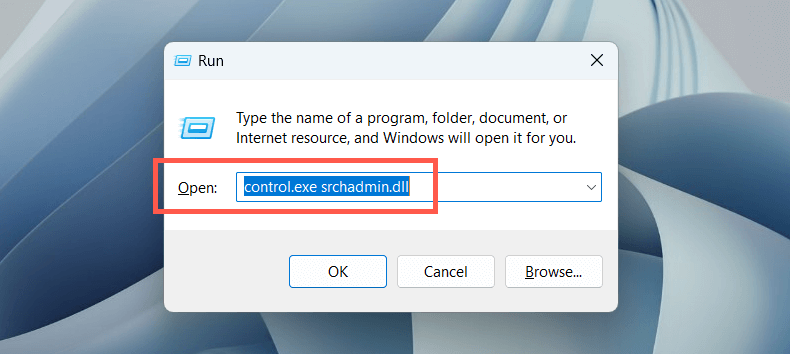
- Select the Advanced button at the bottom of the Indexing Options window.
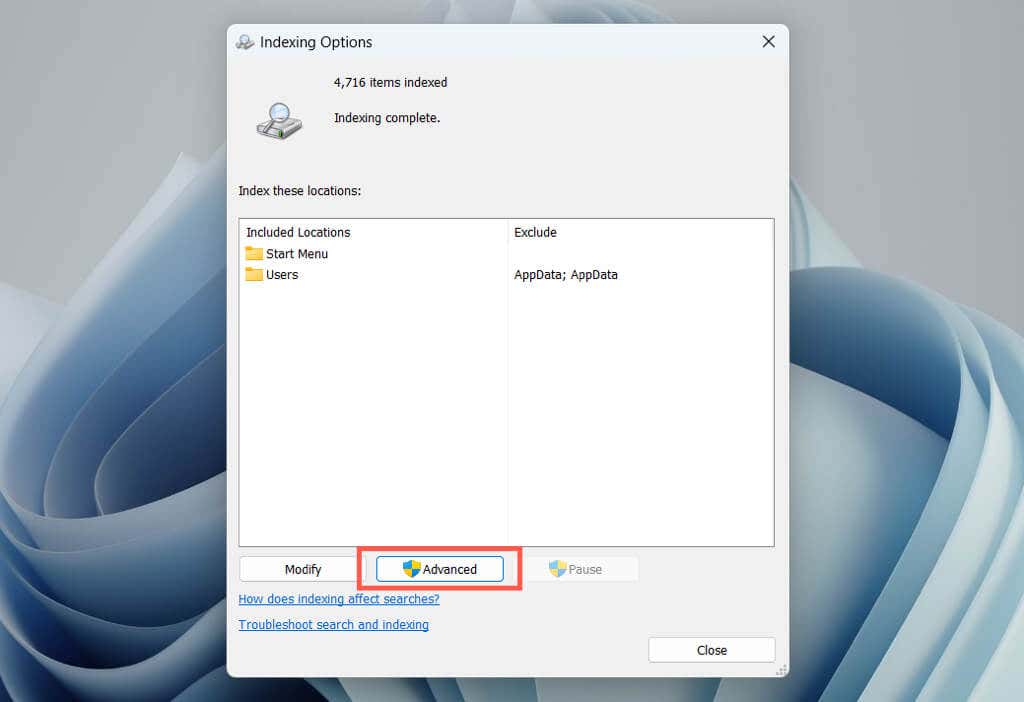
- Select Rebuild.
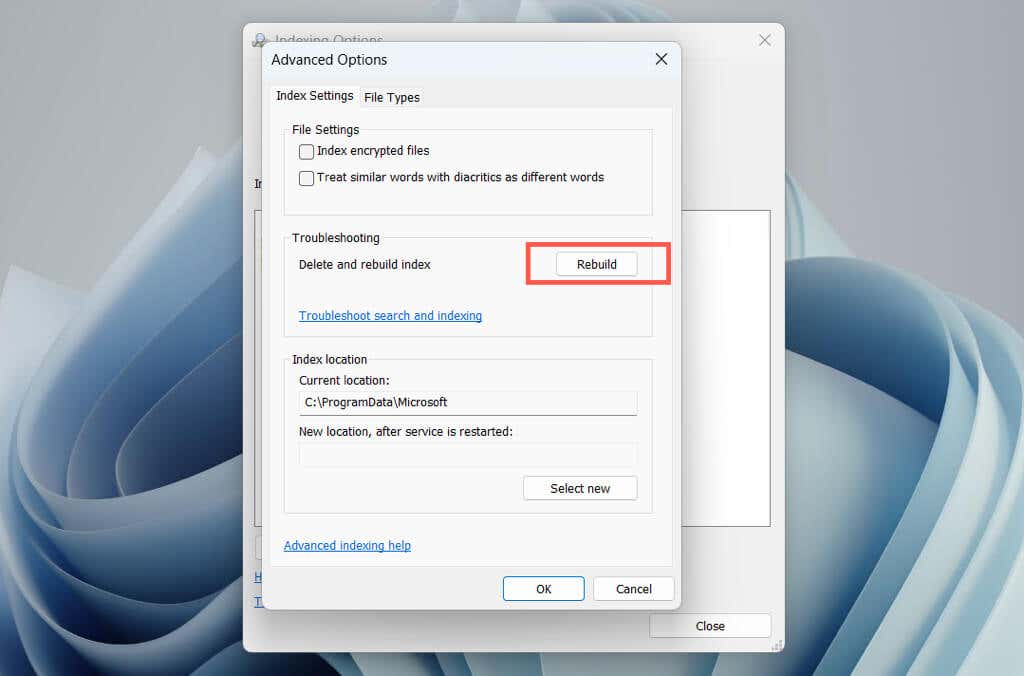
Note: Removing locations you don’t want to include within Windows Search can lessen the load on the searchindexer.exe process. Select the Modify button on the Indexing Options console and uncheck the indexed locations you wish to exclude.
Update Windows
Keeping your Windows operating system up to date with the latest patches and updates can help resolve high CPU usage issues with the Windows Search Indexer process. This also helps improve system performance, security, and stability.
To update Windows, open the Settings app, select Windows Update, and select Check for updates. If there are pending updates, choose Download and install.
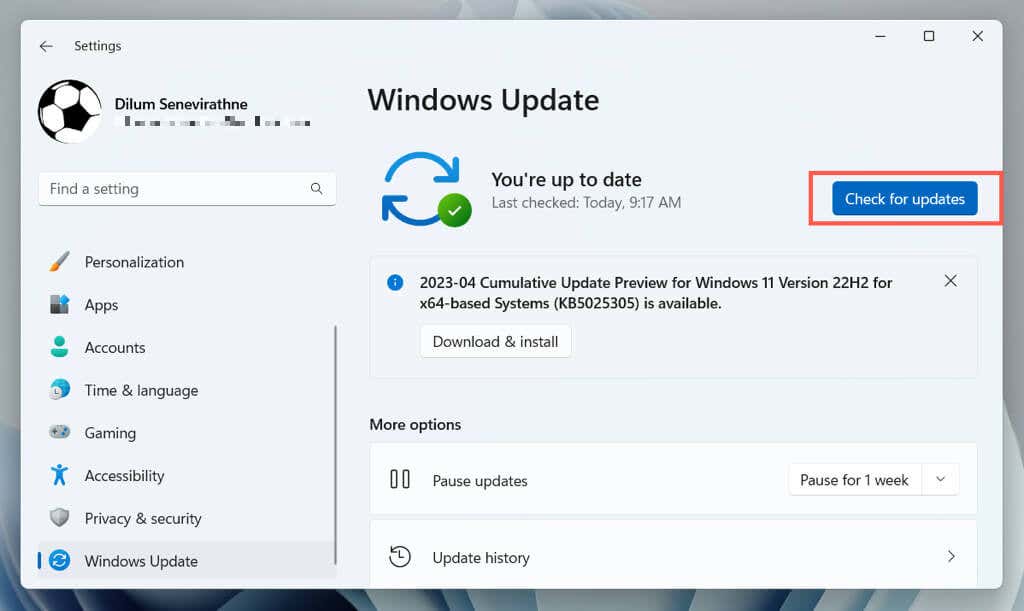
Run an SFC Scan
The System File Checker (SFC) is a command line tool that can help fix system file corruption issues causing the Windows Search Indexer to malfunction. You can run it via an elevated Windows PowerShell or Command Prompt console. Here’s how:
- Right-click the Start menu and select Windows PowerShell/Terminal (Admin). Or, type cmd into the Start menu and choose Run as administrator.
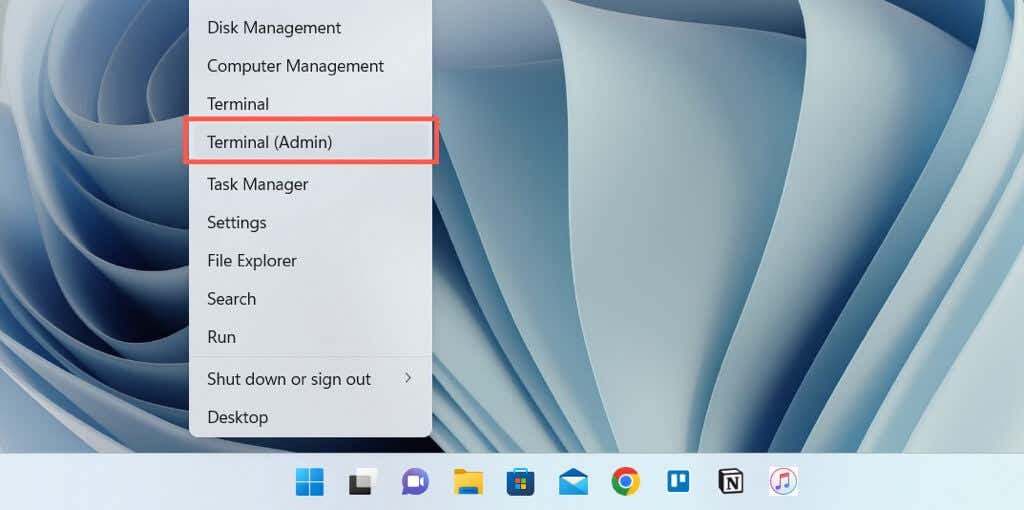
- Run the following command:
sfc /scannow
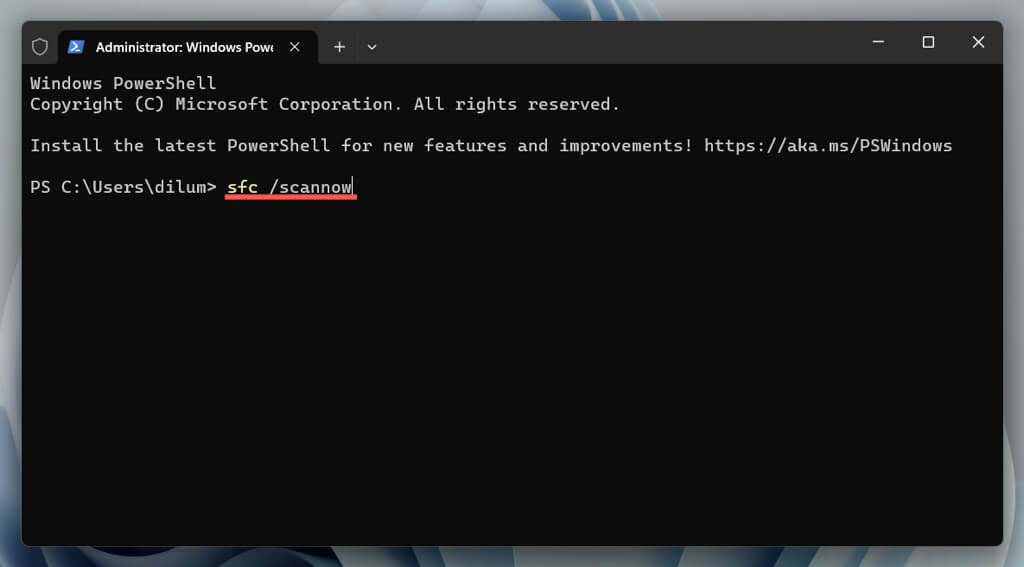
- Wait until the System File Checker scans for and fixes Windows.
Run DISM Tool to Fix Windows
Next, run the DISM (Deployment Image Servicing and Management) tool to resolve issues with operating system stability. Just re-open an elevated Windows PowerShell or Command Prompt console and execute the following command:
DISM.exe /Online /Cleanup-Image /Restorehealth
Perform a Clean Boot
Clean booting Windows helps you identify third-party applications or services causing conflicts with the Windows Search Indexer. To do that:
- Open a Run box, type msconfig, and select OK.
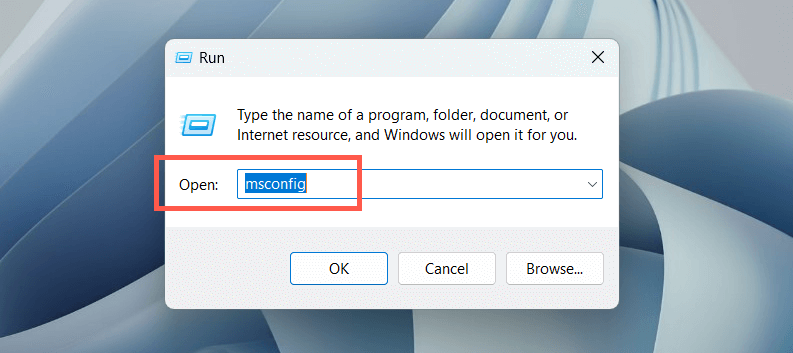
- Switch to the Services tab, select Hide all Microsoft services, and choose Disable all.
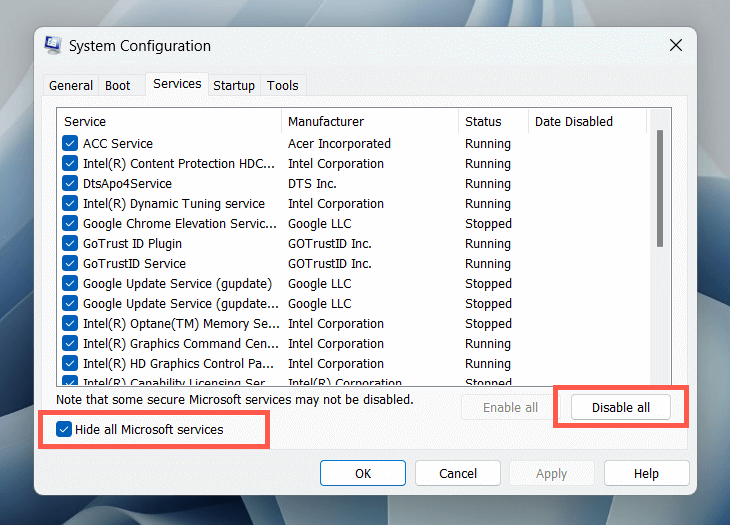
- Restart your computer. If the Microsoft Windows Search Indexer’s high CPU usage stops becoming an issue, re-enable the disabled services individually or in batches to identify the conflicting item.
Additionally, open the Task Manager, disable any non-Microsoft login items from the Startup tab, and check if that helps.
Check for Malware
Malware can hijack the Windows Search Indexer and result in high CPU usage. Run a full system scan to detect and remove malicious software from your system. To do that:
- Open the Start menu, type Windows Security into the search box, and press Enter.
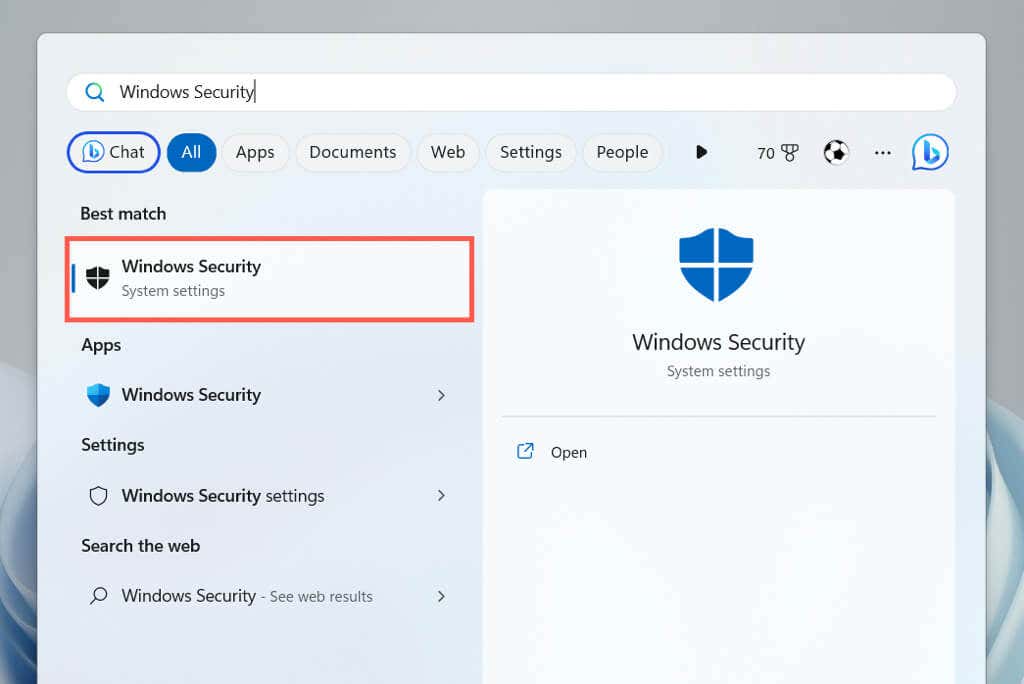
- Select Virus & threat protection.
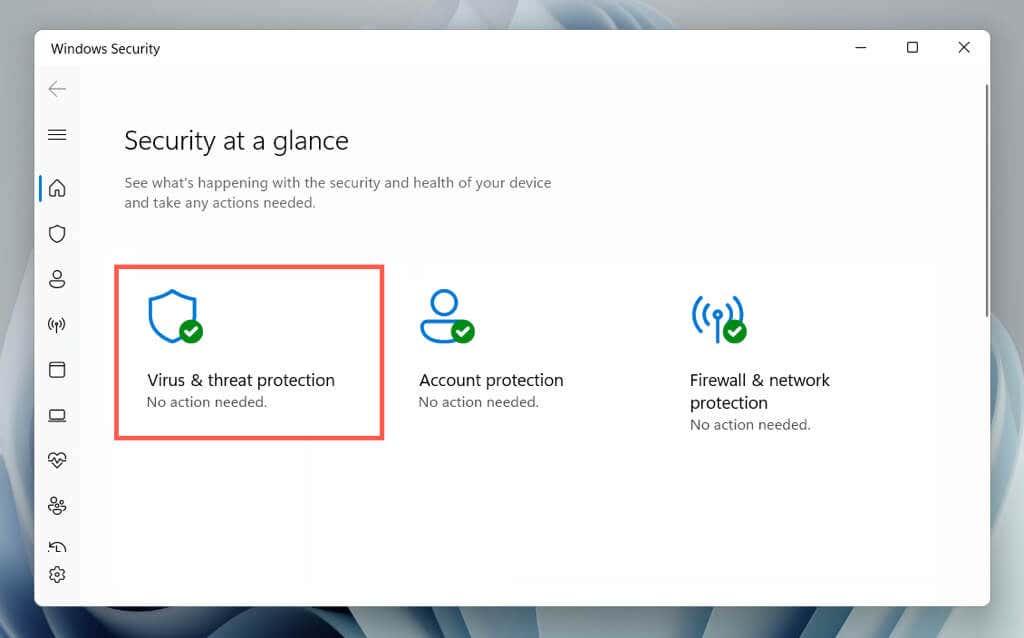
- Select Scan options.
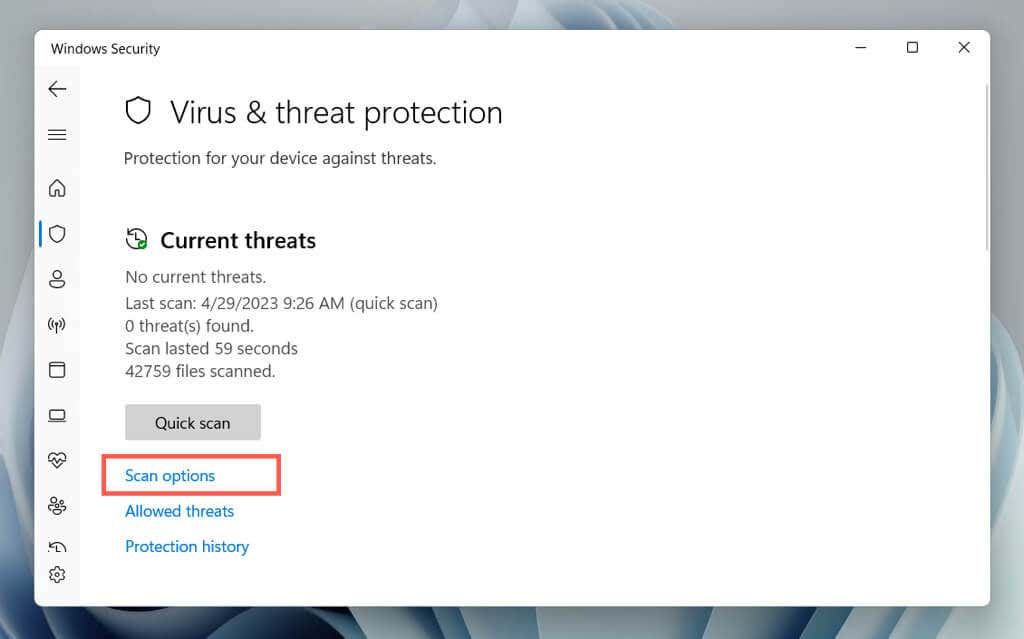
- Select the radio button next to Full scan and choose Scan now.
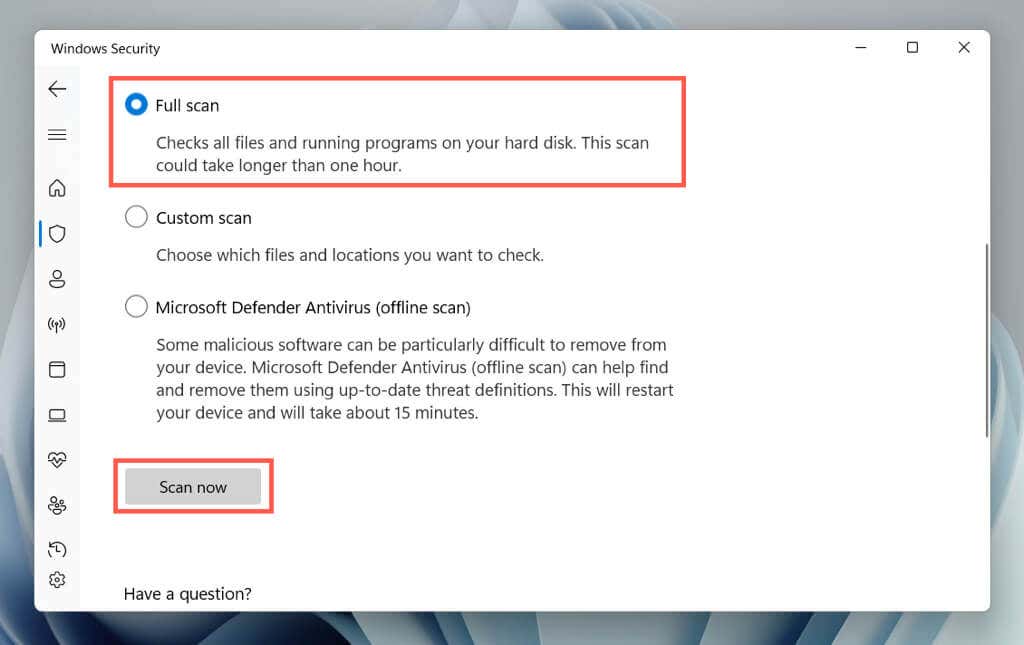
- Wait until Windows Security scans your computer for malware.
You can follow that up with a Microsoft Defender Antivirus (Offline scan), which scans your computer thoroughly for hidden threats. You can also use third-party anti-virus programs to deal with stubborn malware.
Factory Reset Windows
If none of the above methods work, consider factory resetting your PC. This will wipe all data from your computer, return the operating system to its original state, and resolve severe underlying issues with the Windows Search Indexer. Before proceeding, make sure to back up all important files and documents.
To initiate a factory reset, open the Settings app and go to System > Recovery > Reset PC. For comprehensive step-by-step instructions, check our guides to resetting Windows 11 and 10 to factory defaults.
Related Posts
- How to Fix a “This file does not have an app associated with it” Error on Windows
- How to Fix an Update Error 0x800705b4 on Windows
- How to Resolve “A JavaScript error occured in the main process” Error on Windows
- How to Fix the Network Discovery Is Turned Off Error on Windows
- How to Change Folder Icons in Windows

